- Accommodations


New International Travel Regulations to Enter Indonesia as of 10 November 2022
JAKARTA, 21 December 2022 - As an immediate response to recover tourism industry and relaxing the international travel restrictions, COVID-19 Task Force issued the Circular Letter of the COVID-19 Task Force Number 25 of 2022 concerning Health Protocols for International Travels during the COVID-19 Pandemic .
Coordinator of Expert Team and Spokesperson for the COVID-19 Handling Task Force, Prof. Wiku Adisasmito, stated that the adjustment to the control mechanism for international travel was urgently needed. "The COVID-19 policy must also be adaptive with the dynamics of the virus, including the dynamics of its variants that occur globally," Wiku said.
- International Travel
Here are the new international travel regulations according to the Circular Letter of the COVID-19 Task Force Number 25 of 2022 concerning Health Protocols for International Travels during the COVID-19 Pandemic
- The general requirements regarding health protocols for international travelers are as follows:
- Wearing 3 ply of fabric mask or medical grade mask, covering nose, mouth, and chin at indoor settings or any crowded situations;
- Replacing the mask regularly within every 4 hours, and dispose the waste in the proper place;
- Washing hands regularly with water and soap or hand sanitizers;
- Maintaining social distance for a minimum of 1.5 meters and avoiding crowds; and
- Keeping in mind that it is advised not to have one-way or two-way communication by telephone or in person throughout the trip using public transportation modes of land, rail, sea, river, lake, ferry, and air.
- All International travelers, both Indonesian citizens and foreign nationals, can enter Indonesia through the entry points assigned, which are:
a. Airports
- Soekarno Hatta International Airport, Banten;
- Juanda International Airport, East Java;
- Ngurah Rai International Airport, Bali;
- Hang Nadim International Airport, Riau Islands;
- Sam Ratulangi International Airport, North Sulawesi;
- Zainuddin Abdul Madjid International Airport, West Nusa Tenggara;
- Kualanamu International Airport, North Sumatra;
- Sultan Hasanuddin International Airport, South Sulawesi;
- Yogyakarta International Airport, Yogyakarta;
- Sultan Syarif Kasim II, Riau.
- Sultan Iskandar Muda, Aceh;
- Minangkabau, West Sumatra;
- Sultan Aji Muhammad Sulaiman, East Kalimantan;
- Kertajati International Airport, West Java; and
- Sentani International Airport, Papua
b. Seaports
All international seaports in Indonesia are now opened as entry points for international travel through the consideration of the Directorate General of Sea Transportation of the Ministry of Transportation.
c. Cross Border State
- Aruk, West Kalimantan;
- Entikong, West Kalimantan;
- Motaain, East Nusa Tenggara;
- Nanga Badau, West Kalimantan;
- Motamasin, East Nusa Tenggara;
- Wini, East Nusa Tenggara;
- Skouw, Papua; and
- Sota, Papua.
3. International travelers can enter Indonesia through the following conditions:
- Indonesian citizens are allowed to enter Indonesia by following the strict health protocol as mentioned in number 1.
- Foreign nationals are allowed to enter Indonesia by fulfilling the requirements as follows:
- In accordance with the provisions on immigration regulated by the ministry that administers government affairs in the fields of Law and Human Rights;
- In accordance with the agreement scheme (bilateral), such as the Travel Corridor Arrangement (TCA); and/or
- Granted special consideration/permission in writing from the Ministry/Agency.
4. Requirements for Departure Documents for international travelers from Indonesia are as follows:
- International travelers with the status of Indonesian citizens aged 18 years and above who will travel abroad from Indonesia are required to show a card/certificate (physical or digital) of receiving the third dose of COVID-19 vaccine (booster) which is shown through the PeduliLindungi app.
- The provisions on the obligation to show the card/certificate as referred to in letter a are excluded for Indonesian citizens with the following provisions:
- International travelers with the status of Indonesian citizens with special health conditions or comorbid diseases that cause them to not receive the vaccine are required to attach a doctor's certificate from the Government Hospital stating that the person concerned has not and/or cannot receive the Covid-19 vaccine; or
- International travelers with the status of Indonesian citizens who have finished carrying out COVID-19 isolation/treatment and have been declared inactive in transmitting COVID-19 but have not been able to get the third dose of vaccination (booster) must show a doctor's certificate from the Government Hospital or Ministry of Health stating that the person concerned is no longer active. actively transmit COVID-19 or COVID-19 recovery certificate.
5. Requirements for Arrival Documents for international travelers going to Indonesia are as follows:
- International travelers must download and use PeduliLindungi app before departure;
- Presenting the card/certificate (physical or digital) of receiving the second dose of COVID-19 vaccine at least 14 (fourteen) days before departure written in English, other than the language of the country of origin.
- The obligation to show proof (physical and digital) of COVID-19 vaccination certificates as requirements for entering Indonesia are excluded to:
- Foreign nationals under 18 years old; and
- International travelers with special health conditions or comorbid diseases that cause travelers cannot receive vaccines, with the requirements of presenting a doctor's certificate from the State Departure Hospital which states that the concerned person has not been and/or cannot receive COVID-19 vaccination.
- International travelers who have not received a complete dose of vaccination, have finished carrying out COVID-19 isolation or treatment, and have been declared inactive in transmitting COVID-19 with the requirement that they attach a doctor's certificate from the Government Hospital of the departure country or the ministry that carries out government affairs in the health sector on the country of departure stating that the person concerned is no longer actively transmitting COVID-19 or the COVID-19 recovery certificate;
- International travelers with the status of foreign nationals who are Diplomatic visa holders and work visas related to official visit/state officials at the ministerial level or above and foreign nationals who entered Indonesia with the Travel Corridor Arrangement scheme, according to the principle of reciprocity while implementing a strict health protocol; and
- International travelers with the status of foreign nationals who have not received the vaccine and intend to travel domestically in order to continue their journey with international flights out of Indonesian territory, are allowed not to show their COVID-19 vaccination card/certificate as long as they do not leave the airport area during transit waiting for international flights to be followed, with requirements:
- Has been permitted by the local Port Health Office to travel domestically in order to continue the journey with international flights out of the territory of Indonesia; and
- Showing the schedule of flight tickets outside Indonesia for direct transit from the departure city to the international airport in the territory of Indonesia with the final destination to the destination country.
6. COVID-19 Entry Points Health Protocols are listed as follows:
- International travelers must proceed through international travel arrival documents checking as being mentioned in no. 4.
- Upon arrival at the entry points, international travelers must undergo a COVID-19 symptom check, including a body temperature check.
- International travelers with a symptom of COVID-19 or body temperature above 37.5 degrees Celsius must undergo RT-PCR examination upon arrival with payment borne by the government for Indonesian citizen and by self-financing for foreign nationals
- International travelers without a symptom of COVID-19 and body temperature below 37.5 degrees Celsius are not required to undergo RT-PCR examination upon arrival and can continue their travel while also conducting 14 days of self health monitoring.
- International travelers conducting the RT-PCR confirmation examination as referred to in point c are allowed to continue the journey after conducting the RT-PCR confirmation examination sample and must comply with the following provisions:
- Waiting for the results of the RT-PCR confirmation examination in hotel rooms, lodging rooms, or residences; and
- Are not allowed to leave hotel rooms, lodging rooms, or residences and are not allowed to interact with other people before the results of the RT-PCR confirmation examination show negative results.
- In the event that the RT-PCR confirmation examination as referred to in point c shows a positive result, the international traveler shall be isolated/treated in accordance with the follow-up mechanism for the positive case.
- In the event that the RT-PCR confirmation examination as referred to in point c shows a negative result, the international traveler is allowed to continue the journey and it is recommended to carry out independent health monitoring of COVID-19 symptoms for 14 days by implementing strict health protocols.
7. Positive Case Follow-up Mechanism and Isolation/Treatment are as follows:
- International travelers with positive RT-PCR confirmation examination results without symptoms or experiencing mild symptoms are required to carry out isolation/treatment in isolation hotels or centralized isolation facilities set by the government or self-isolate in their own residences with isolation/treatment times as recommended by the Ministry of Health.
- International travelers with positive RT-PCR confirmation examination results accompanied by moderate or severe symptoms and/or with uncontrolled comorbidities, will be isolated/treated at a Covid-19 referral hospital with isolation/treatment time according to recommendations from doctors and recommendations from the Ministry of Health.
8. COVID-19 Vaccination Program for International Travelers are as follows:
- International travelers with the status of Indonesian citizens who have not received the COVID-19 vaccination, either the first dose, the second dose, or the third dose are required to undergo vaccination at the entry point for overseas travel after a symptom check is carried out.
- International travelers with the status of foreign nationals who are already in Indonesia and will travel, both domestically and internationally, are required to undergo vaccination through a program or mutual cooperation scheme in accordance with the provisions of the legislation.
9. Financing of all the provisions mentioned above are regulated as follows:
- The cost of RT-PCR confirmation examination at the entry point as referred to in number 5.c. for foreign nationals it is borne independently, while for Indonesian citizens it is borne by the government.
- The cost of handling COVID-19 and medical evacuation for foreign nationals is borne independently, while for Indonesian citizens it is borne by the government.
- The cost of vaccination at the entry point for international travelers with the status of Indonesian citizens as referred to in letter 7.a is borne by the government.
- In the event that the international travelers with the status of foreign nationals are unable to finance the RT-PCR confirmation examination at the entry point and isolation/treatment when the results of the RT-PCR confirmation examination show positive results, as referred to in point a and b, then the Sponsor, Ministry/Institution/State-Owned Enterprises providing the consideration of the entry permit for the foreigner can be asked for the accountability in question.
10. Other provisions are as follows:
- In regards to the results of the RT-PCR test at the entry point, a written comparison can be requested by filling out the form provided by the Port Health Office or the Ministry of Health at the expense of the inspection being borne by the international travelers.
- The implementation of the RT-PCR comparison test as referred to in point a is carried out simultaneously by the Port Health Office in 2 (two) laboratories for the purpose of SGTF comparison examination and comparative examination of RT-PCR results, namely at: Health Research and Development Agency (Balitbangkes), Cipto Mangunkusumo Central General Hospital (RSCM), 9 Gatot Soebroto Army Central Hospital (RSPAD), Bhayangkara Raden Said Sukanto Hospital (Polri Hospital) or other government laboratories (Environmental Health Engineering Center, Regional Health Laboratory, or other government reference laboratories).
- The Port Health Office of airports and international seaports facilitates international travelers requiring emergency medical services upon arrival in Indonesia in accordance with the provisions of laws and regulations.
- Every transportation mode operator at the entry point for overseas travel is required to use the PeduliLindungi app.
- Ministries/institutions/regional apparatus that carry out functions related to the international travelers must follow up this Circular Letter by issuing legal instruments that are in harmony and do not conflict with the provisions of laws and regulations.
- The legal instrument as referred to in point e is an inseparable part of this Circular Letter.
This regulation is effective from 1 September 2022 until a later date is determined. You can check the complete detail regarding this regulation on this link.
Visa Exemption Arrangement Facility and Visa on Arrival for Indonesia
- Visa Exemption Arrangement facility and Visa on Arrival for Indonesia
Furthermore, based on the Circular Letter of the Directorate General of Immigration No. IMI-0708.GR.01.01 of 2022 concerning the Ease of Immigration to Support Sustainable Tourism during the COVID-19 Pandemic effective from 23 September 2022, the Indonesian government has decided to exercise the Visa Exemption Arrangement facility and updated the list of countries eligible for Visa On Arrival (VOA) for tourism purposes.
The list of countries and special entities for Visit Visa Exemption Arrangement facility , in alphabetical order are:
- Brunei Darussalam,
- Philippines,
- Thailand, and
Visit Visa Exemption for Tourism Purpose are granted for foreign nationals at the Immigration Checkpoints as follows :
a. Airports:
1) Hang Nadim, Riau Islands; 2) Juanda, East Java; 3) Kertajati, West Java; 4) Kualanamu, North Sumatra; 5) Minangkabau, West Sumatra; 6) Ngurah Rai, Bali; 7) Sam Ratulangi, North Sulawesi; 8) Sentani, Jayapura; 9) Soekarno Hatta, Banten; 10) Sultan Aji Muhammad Sulaiman, East Kalimantan; 11) Sultan Hasanuddin, South Sulawesi; 12) Sultan Iskandar Muda, Aceh; 13) Sultan Syarif Kasim II, Riau; 14) Yogyakarta, DI Yogyakarta; 15) Zainuddin Abdul Majid, West Nusa Tenggara.
b. Seaports:
1) Achmad Yani, North Maluku; 2) Amamapare, Papua; 3) Anggrek, Gorontalo; 4) Bagan Siapi-Api, Riau; 5) Bandar Bentan Telani Lagoi, Riau Islands; 6) Bandar Seri Udana Lobam, Riau Islands; 7) Bandar Sri Setia Raja, Riau; 8) Batam Centre, Riau Islands; 9) Batu Ampar, Riau Islands; 10) Belakang Padang, Riau Islands; 11) Belawan, North Sumatra; 12) Benete, West Nusa Tenggara; 13) Benoa, Bali; 14) Biak, Papua; 15) Boom Baru, South Sumatra; 16) Celukan Bawang, Bali; 17) Cirebon, West Java; 18) Citra Tri Tunas, Riau Islands; 19) Ciwandan, Banten; 20) Dumai, Riau; 21) Dwi Kora, West Kalimantan; 22) Gunung Sitoli, North Sumatera; 23) Jambi, Jambi; 24) Jayapura, Papua; 26) Kabil, Riau Islands; 27) Kendari, Southeast Sulawesi; 28) Kota Baru, South Kalimantan; 29) Kuala Enok, Riau; 30) Kuala Langsa, Aceh; 31) Kuala Tanjung, North Sumatra; 32) Kumai, Central Kalimantan; 33) Labuan Bajo, East Nusa Tenggara; 34) Lauren Say, East Nusa Tenggara; 35) Lemar, West Nusa Tenggara; 36) Lhokseumawe, Aceh; 37) Malahayati, Aceh; 38) Manado, North Sulawesi Utara; 40) Marina Ancol, DKI Jakarta; 41) Marina Teluk Senimba, Riau Islands; 42) Merauke, Papua; 43) Muara Sabak, Jambi; 44) Nongsa Terminal Bahari, Riau Islands; 45) Nusantara, North Sulawesi; 46) Nusantara Nusantara Pare Pare, South Sulawesi; 47) Padang Bai, Bali; 48) Panarukan, East Java; 49) Pangkal Balam, Bangka Belitung; 50) Panjang, Lampung; 51) Pantoloan, Central Sulawesi; 52) Pasuruan, East Java; 53) Patimban, West Java; 54) Probolinggo, East Java; 55) Pulau Baai, Bengkulu; 56) Sabang, Aceh; 57) Samarinda, East Kalimantan; 58) Sampit, Central Kalimantan; 59) Samudera, North Sulawesi; 60) Saumlaki, Maluku; 61) Sekupang, Riau Islands; 62) Selat Lampa, Riau Islands; 63) Semayang, East Kalimantan; 64) Siak Sri Indrapura, Riau; 65) Sibolga, North Sumatra; 66) Sintete, West Kalimantan; 67) Soekarno-Hatta, South Sulawesi; 68) Sorong, Papua; 69) Sri Bayintan, Riau Islands; 70) Sri Bintan Pura, Riau Islands; 71) Sunda Kelapa, DKI Jakarta; 72) Sungai Guntung, Riau; 73) Tanjung Balai Karimun, Riau Islands; 74) Tanjung Emas, Central Jawa; 75) Tanjung Gudang, Bangka Belitung; 76) Tanjung Harapan, Riau; 77) Tanjung Intan, Central Java; 78) Tanjung Kalian, Bangka Belitung; 79) Tanjung Pandan, Bangka Belitung; 80) Tanjung Perak, East Java; 81) Tanjung Priok, DKI Jakarta; 82) Tanjung Uban, Riau Islands; 83) Tanjung Wangi, East Java; 84) Tarempa, Riau Islands; 85) Teluk Bayur, West Sumatra; 86) Teluk Nibung, North Sumatra; 87) Tembilahan, Riau; 88) Tenau, East Nusa Tenggara; 89) Tri Sakti, South Kalimantan; 90) Tual, Maluku; 91) Yos Sudarso, Maluku;
c. Cross-Border Posts:
1) Aruk, West Kalimantan; 2) Entikong, West Kalimantan; 3) Marore, North Sulawesi; 4) Miangas, North Sulawesi; 5) Mota’ain, East Nusa Tenggara; 6) Motamasin, East Nusa Tenggara; 7) Nanga Badau, West Kalimantan; 8) Serasan, Riau Islands; 9) Skouw, Papua; 10) Sota, Papua; 11) Tunon Taka, North Kalimantan; 12) Wini, East Nusa Tenggara.
Effective from 23 September 2022, below are the list of countries and special entities for VOA for tourism, in alphabetical order:
- Bosnia Herzegovina
- Brunei Darussalam
- Czech Republic
- Liechtenstein
- Netherlands
- New Zealand
- Philippines
- Saudi Arabia
- South Africa
- South Korea
- Switzerland
- Timor Leste
- Türkiye
- United Arab Emirates
- United Kingdom
- United States of America
- Vatican City
VOA for Tourism Purpose are granted for foreign nationals at the Immigration Checkpoints as follows
Immigration Checkpoints on Airports
- Hang Nadim, Riau Islands;
- Juanda, East Java;
- Kualanamu, North Sumatra;
- Ngurah Rai, Bali;
- Raja Haji Fisabilillah, Riau Islands;
- Sam Ratulangi, North Sulawesi;
- Sentani, Papua
- Soekarno Hatta, DKI Jakarta;
- Sultan Hasanuddin, South Sulawesi;
- Sultan Syarif Kasim II, Riau;
- Yogyakarta in Special Region of Yogyakarta;
- Zainuddin Abdul Madjid in West Nusa Tenggara.
Immigration Checkpoints on Seaports
- Bandar Bentan Telani Lagoi, Riau Islands;
- Bandar Seri Udana Lobam, Riau Islands;
- Batam Centre, Riau Islands;
- Belawan, North Sumatra;
- Benoa, Bali;
- Biak, Papua;
- Citra Tri Tunas, Riau Islands;
- Dumai in Riau;
- Jayapura, Papua;
- Labuan Bajo, East Nusa Tenggara;
- Lembar, West Nusa Tenggara;
- Marina Teluk Senimba, Riau Islands;
- Malundung, North Kalimantan;
- Marina Ancol, Jakarta;
- Nongsa Terminal Bahari, Riau Islands;
- Nusantara Pare-Pare, South Sulawesi;
- Padang Bai, Bali;
- Sabang, Aceh;
- Samudera, North Sulawesi;
- Saumlaki, Maluku;
- Sekupang, Riau Islands;
- Sibolga, North Sumatra;
- Soekarno-Hatta, South Sulawesi;
- Sorong, Papua;
- Sri Bintan Pura, Riau Islands;
- Sunda Kelapa, DKI Jakarta;
- Tanjung Balai Karimun, Riau Islands;
- Tanjung Emas, Central Java;
- Tanjung Pandan, Bangka Belitung;
- Tanjung Perak, East Java;
- Tanjung Priok, Jakarta;
- Tarempa, Riau Islands;
- Teluk Bayur, North Jakarta;
- Tenau, East Nusa Tenggara;
- Tual, Maluku.
Immigration Checkpoints on Cross-Border Posts
- Mota’ain, East Nusa Tenggara;
- Sota, Papua;
- Tunon Taka, North Kalimantan;
- Wini, East Nusa Tenggara.
The regulations and details for Visit Visa Exemption for Tourism Purpose and Visa On Arrival for Tourism are listed as follows:
1. International travelers must present all requirements for the VOA at the immigration counter, namely:
i. Diplomatic Passport, ii. Service Passport, or iii. General Passport;
With validity period of at least 6 (six) months;
- A return ticket or a connecting ticket to continue traveling to another country;
- Proof of non-tax revenue payment in case of applying for a VOA for tourism purpose
2. Visa Exemption Arrangement for Tourism and VOA for tourism can be used by foreign nationals to carry out tourism activities or government duties in international activities of a state or government nature;
3. In the event that the foreign national as referred to in number 3 will carry out government duties in international activities of a state or government nature, in addition to meeting the requirements as referred to in number 2 must also attach an invitation letter to attend a conference/trial/meeting issued by the related Ministry/Agency of the Republic of Indonesia;
4. VOA for Tourism can also be granted to foreign nationals holding Diplomatic Passports or Service Passports who are not citizens of the State, Government of a Special Administrative Region of a State, and Certain Entities Subject to a VOA for Tourism in the event that there is no Representative of the Republic of Indonesia in the country/place of residence or emergency/urgent activities, by examining the following requirements:
- Diplomatic Passport or Service Passport with a validity period of at least 6 (six) months,
- A return ticket or a one-way ticket to continue the journey to another country;
- Request letter from the Ministry/Agency/Agency of the Republic of Indonesia;
- Letter of approval from the Director General of Immigration;
- Proof of non-tax revenue payment for VOA for tourism; and
- Invitation letter to attend conferences/trials/meetings issued by Ministries/Institutions/Agencies of the Republic of Indonesia, in terms of the intention of visiting foreigners for government duties in international activities of a state or government nature;
5. The approval letter from the Director General of Immigration as referred to in number 4 letter d is submitted by the chairs of the Ministry/Institution/Agency of the Republic of Indonesia to the Director General of Immigration u.p. Director of Immigration Traffic by attaching:
- A request letter from the Ministry/Agency/Agency of the Republic of Indonesia containing data on foreign nationals and the reasons for the submission,
- Diplomatic Passport or Service Passport with a validity period of at least 6 (six) months, and
6. Foreign nationals holding Visa Exemption Arrangement for Tourism and VOA for tourism cannot apply for a New Stay Permit through a Visa application;
7. Foreign nationals holding Visa Exemption Arrangement for Tourism and VOA for tourism can leave the territory of Indonesia through all Immigration Checkpoints;
8. The applicable rate for a VOA for tourism is the rate for a Visa on Arrival as referred to in the Attachment to Government Regulation Number 28 of 2019 which is IDR 500,000,-;
9. Perform data reconciliation between non-tax revenue payments, use of Visit Visa stickers on VOA for tourism with immigration crossings on a daily, weekly, and monthly basis;
Passport holders outside the above listed categories in point 2, can also enter Indonesia through entry points mentioned in point 1 by applying for e-visa prior to departure.
If you are already in Indonesia and planning to depart on a domestic trip, we suggest you find an updated regulation regarding domestic travel by clicking the link here .
Second Home Visa
Foreigners can stay for 5 (five) or 10 (ten) years and carry out various activities, such as investment and others. Foreigners can also conveniently apply for a second-home visa through a website-based application( visa-online.imigrasi.go.id ).
Check here for the required documents.
E-Visa on Arrival (E-VoA)
According to the Circular Letter of the Directorate General of Immigration No. IMI-0764.GR.01.01 of 2022 concerning the Immigration Policy regarding Electronic Visit Visa Services, Visit Visa on Arrival Services, and Free Visit Visa to Support Sustainable Tourism during the Covid-19 Pandemic, as of 10 November, 2022, E-VoA program is being applied for some international travelers in order to ease their visit to Indonesia and attract more foreign travelers to come. The E-VoA program is available at 6 airports and 11 seaports across Indonesia and currently accessible to foreign nationals from 46 countries.
You can check the details regarding the E-VoA program by clicking the link here .
It is also expected for all international travelers to practice healthy habits such as washing hands frequently, wearing a mask in public places, and implementing social distancing. Kindly note that this regulation changes dynamically in order to adapt to certain circumstances. Be sure to follow us on Instagram , Facebook , Twitter , TikTok and YouTube to get an immediate update on the regulations in the future.
*Disclaimer : This article was updated on 16 January 2022. Due to the dynamic nature of travel regulations, please stay updated and confirm your itinerary with your chosen travel providers.
Suggested for you
10 Iconic Cuisines That You Must Try on Your Next Visit to Bali
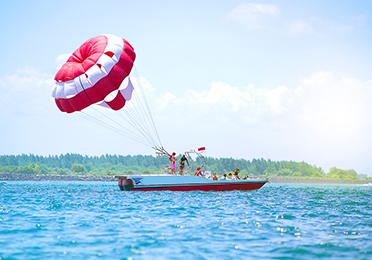
Bali's Adrenaline pumping Water Sports
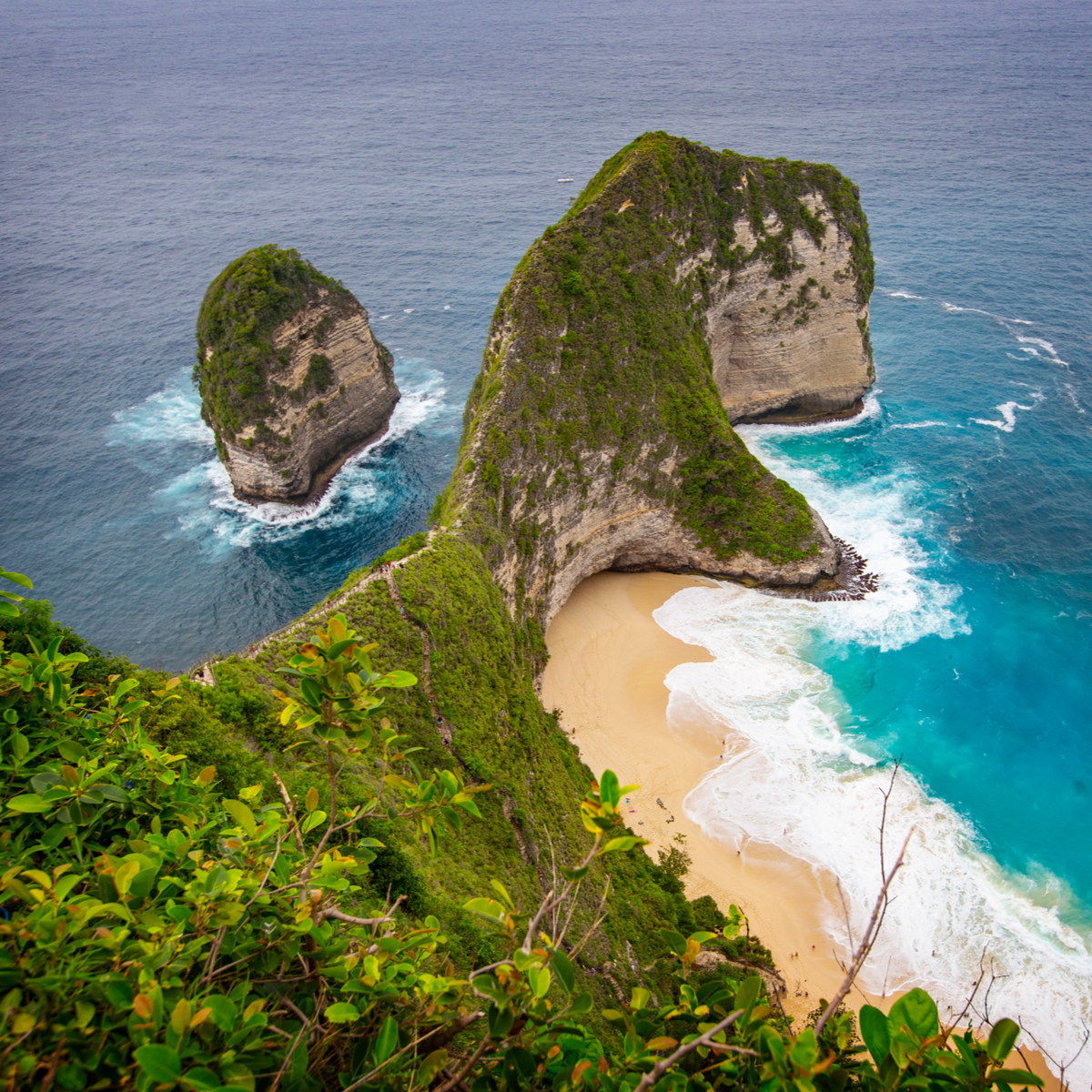
Imagine Visiting Beautiful Beaches That Match Your Chinese Zodiac
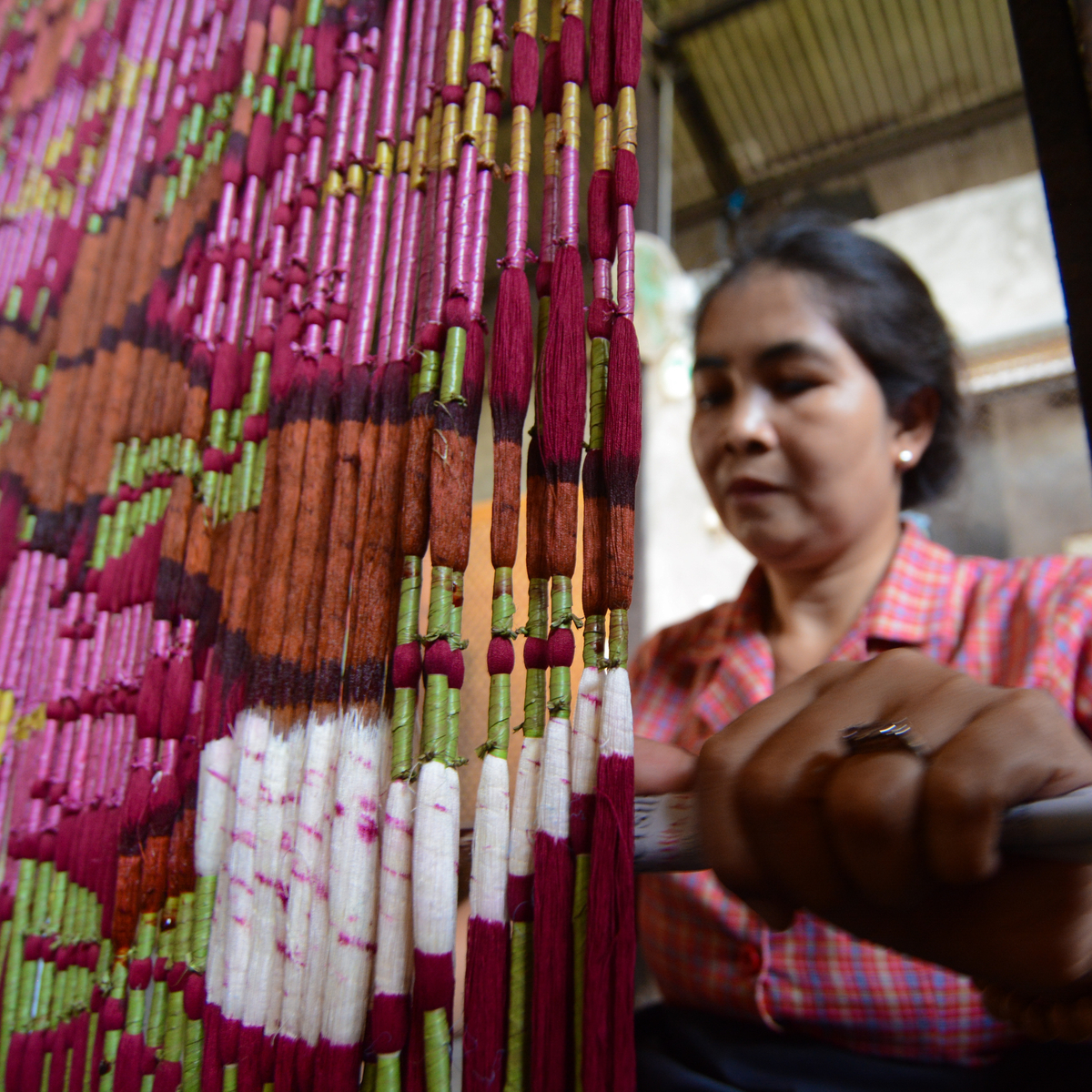
5 Enchanting Traditional Textiles from Bali
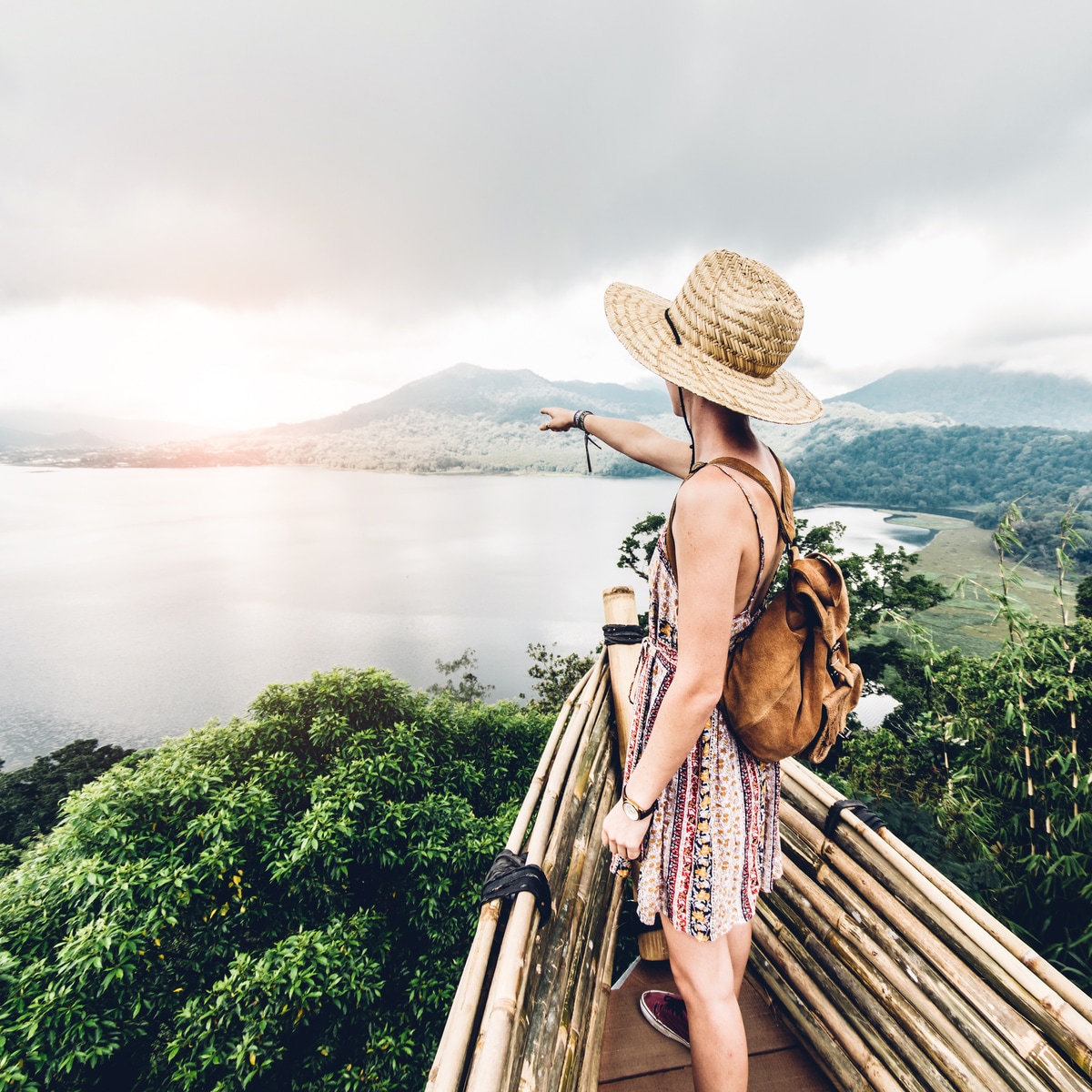
Missing Bali’s Paradise? Plan a Magical Trip with These Backpacking Ideas!

Visit our other website
This is the official website of the Ministry of Tourism, Republic of Indonesia. The contents listed on this website are intended for informational purposes rather than commercial. Any displayed sale is meant as a token of partnership and will always redirect you to our partners' sites.
- Sustainability
- Latest News
- News Reports
- Documentaries & Shows
- TV Schedule
- CNA938 Live
- Radio Schedule
- Singapore Parliament
- Mental Health
- Interactives
- Entertainment
- Style & Beauty
- Experiences
- Remarkable Living
- Send us a news tip
- Events & Partnerships
- Business Blueprint
- Health Matters
- The Asian Traveller
Trending Topics
Follow our news, recent searches, indonesia, malaysia leaders agree to travel corridor arrangement, advertisement.
Malaysian Prime Minister Ismail Sabri Yaakob greeted by Indonesian President Joko Widodo at Istana Bogor on Nov 10, 2021. (Photo: Prime Minister's Office of Malaysia)

Kiki Siregar
JAKARTA: The leaders of Indonesia and Malaysia said they have agreed to start a travel corridor arrangement (TCA) between the two countries with the details to be firmed up later.
In a press conference after his meeting with Malaysian Prime Minister Ismail Sabri Yaakob on Wednesday (Nov 10), President Joko Widodo said the opening up of a travel corridor between Malaysia and Indonesia could facilitate the post-pandemic economic recovery in the two countries.
“Regarding the post-pandemic economic recovery, I welcome the 49 per cent increase in trade during January to August 2021 compared to the same period last year,” said Mr Widodo.
“And to support the economic recovery, we agreed to establish a travel corridor arrangement which we will gradually open one by one,” he added.
Mr Ismail Sabri said that Malaysia and Indonesia have agreed to start opening the borders of the two countries with the travel arrangement.
"And I have agreed with the president, that the relevant ministers will look into more detail so that we can start opening the two countries.
“We can open our borders, and maybe we can start with this initial framework with Kuala Lumpur - Jakarta - Kuala Lumpur, and also Kuala Lumpur - Bali - Kuala Lumpur.”
In a separate press release issued by the Malaysian prime minister’s office, it said that the travel lane would give priority to those who have been "fully vaccinated, for officials, business travellers, and those travelling for medical and humanitarian reasons."
The travel corridor will also involve mutual recognition of COVID-19 vaccination certificates and standard COVID-19 Polymerase Chain Reaction (PCR) screening test results, said the statement.
Malaysia hopes that the travel lane with Indonesia can start in early 2022, added the statement.
Indonesia has so far no vaccinated travel lane (VTL) with other countries but Malaysia announced its first VTL on Monday with Singapore .
Mr Ismail Sabri’s is currently on a three-day visit to Indonesia at the invitation of Mr Widodo.
It is his first official overseas trip since assuming office in August. Both leaders also took the opportunity to discuss other issues such as the developments at the Kalimantan-Sabah border, the Myanmar crisis and issues in the South China Sea.

Indonesia, Malaysia to work on proposed travel corridor: Foreign ministers
PROTECTION OF INDONESIAN MIGRANT WORKERS
Mr Widodo and Mr Ismail Sabri also discussed the protection of Indonesian migrant workers in Malaysia through a memorandum of understanding (MOU) between the two countries.
"Some of the issues that we discussed earlier were about the importance of cooperation in protecting Indonesian citizens in Malaysia.
“I encouraged that the MOU on the protection of domestic workers can be finalised immediately,” said Mr Widodo who is popularly known as Jokowi.
Mr Ismail Sabri noted that both countries have made progress on the MOU on the recruitment and protection of Indonesian domestic workers, which he hoped could be finalised in the near future.
He said Malaysia on its part has taken steps in the protection of Indonesian migrant workers, including passing a new law to ensure the minimum standards of housing facilities for the comfort of foreign workers in the country.
The Malaysian government has also extended until the end of the year the recalibration or amnesty programme to Indonesian citizens with expired work permits who could not return home because of the COVID-19 pandemic.
Mr Ismail Sabri said that he hopes the programme can be fully utilised by Indonesian citizens in Malaysia who either want to return home voluntarily or to work legally in Malaysia.
Earlier, both Mr Widodo and Mr Ismail Sabri witnessed the exchanges of two memorandums of understanding signed between Indonesia and Malaysia in matters related to financial and educational agreements.
Mr Ismail Sabri will also witness the signing of a few other MOUs with the Indonesian chamber of commerce later on Wednesday and visit a defence industry facility in Bandung during his stay.
He has also invited Mr Widodo to visit Malaysia.
Related Topics
Also worth reading, this browser is no longer supported.
We know it's a hassle to switch browsers but we want your experience with CNA to be fast, secure and the best it can possibly be.
To continue, upgrade to a supported browser or, for the finest experience, download the mobile app.
Upgraded but still having issues? Contact us

Travel Corridor Arrangement Application Process by Goverments of Indonesia and Singapore
- Fitri Kurnianingsih Universitas Maritim Raja Ali Haji
- Mahadiansar Mahadiansar Universitas Maritim Raja Ali Haji
- Oksep Adhayanto Universitas Maritim Raja Ali Haji
The discussion on the Travel Corridor Arrangement (TCA) between the Indonesian and Singaporean governments will continue in the future, but technically and practically, there are still certain issues that the Indonesian government has not addressed effectively. This demonstrates that we are technically still waiting for the correct judgement while the COVID-19 pandemic's case count declines. The goal of this article is to examine different research hypotheses on the elements that impact Indonesia's readiness for TCA with the Singapore government. The technique employed is a qualitative literature review. To bolster the literature review with secondary data, the researchers enhanced the examination of research hypotheses using the NVivo program, which was then thoroughly assessed. The findings indicate that researchers will also identify that Indonesia will be more sensitive to TCA than Singapore, resulting in the decision being rejected, while the next hypothesis is that TCA is also focused on tourists, as opposed to business activities between the two countries, and that the Indonesian government has also proposed implementing RGL, but RGL is not a priority, implying that TCA is more effective. if RGL is emphasized, the hypothesis may be accepted. This suggests that based on some of the results of these hypotheses, the rejection of the first hypothesis is due to a lack of expertise in Human Resource Management in implementing TCA with the Singapore government
Author Biographies
Fitri kurnianingsih, universitas maritim raja ali haji.
Department of Master Public Administration
Mahadiansar Mahadiansar, Universitas Maritim Raja Ali Haji
Department of Public Administration
Oksep Adhayanto, Universitas Maritim Raja Ali Haji
Department of Law
Ali, W., Frynas, J. G., & Mahmood, Z. (2017). Determinants of Corporate Social Responsibility (CSR) Disclosure in Developed and Developing Countries: A Literature Review: Determinants of CSR Disclosure. Corporate Social Responsibility and Environmental Management, 24(4), 273–294. https://doi.org/10.1002/csr.1410
Archibugi, D., & Coco, A. (2004). A New Indicator of Technological Capabilities for Developed and Developing Countries (ArCo). World Development, 32(4), 629–654. https://doi.org/10.1016/j.worlddev.2003.10.008
Baker, M. G., Wilson, N., & Blakely, T. (2020). Elimination Could Be the Optimal Response Strategy for COVID-19 and Other Emerging Pandemic Diseases. BMJ, m4907. https://doi.org/10.1136/bmj.m4907
Balsas, C. J. L. (2021). Sustainable Urbanism: Riverfront Greenway Planning From Tradition to Innovation. Innovation: The European Journal of Social Science Research, 1–21. https://doi.org/10.1080/13511610.2021.1920001
Bazeley, P. (2007). Qualitative Data Analysis with NVivo. SAGE Publications.
Chan, Y. W., & Haines, D. (2021, May 17). Asia Pacific Travel Bubbles and the COVID-19 ‘Diseasescape.’ EastAsiaForum. https://www.eastasiaforum.org/2021/05/17/asia-pacific-travel-bubbles-and-the-covid-19-diseasescape/
Connor, C. (2021). Computing for Numeracy: How Safe is Your COVID-19 Social Bubble? Numeracy, 14(1). https://doi.org/10.5038/1936-4660.14.1.1382
Dedrick, J., Kraemer, K. L., & Shih, E. (2013). Information Technology and Productivity in Developed and Developing Countries. Journal of Management Information Systems, 30(1), 97–122. https://doi.org/10.2753/MIS0742-1222300103
Dickens, B. L., Koo, J. R., Lim, J. T., Park, M., Sun, H., Sun, Y., Zeng, Z., Quaye, S. E. D., Clapham, H. E., Wee, H. L., & Cook, A. R. (2021). Determining Quarantine Length and Testing Frequency for International Border Opening During the COVID-19 Pandemic. Journal of Travel Medicine, 28(7), taab088. https://doi.org/10.1093/jtm/taab088
Dobransky, K., & Hargittai, E. (2021). Piercing the Pandemic Social Bubble: Disability and Social Media Use About COVID-19. American Behavioral Scientist, 65(12), 1698–1720. https://doi.org/10.1177/00027642211003146
Edhlund, B., & McDougall, A. (2018). NVivo 12 Essentials.
Fauzi, M. A., & Paiman, N. (2020). COVID-19 Pandemic in Southeast Asia: Intervention and Mitigation Efforts. Asian Education and Development Studies, 10(2), 176–184. https://doi.org/10.1108/AEDS-04-2020-0064
Filonchyk, M., Hurynovich, V., & Yan, H. (2021). Impact of COVID-19 Lockdown on Air Quality in the Poland, Eastern Europe. Environmental Research, 198, 110454. https://doi.org/10.1016/j.envres.2020.110454
Fusté-Forné, F., & Michael, N. (2021). Limited Tourism: Travel Bubbles for a Sustainable Future. Journal of Sustainable Tourism, 1–18. https://doi.org/10.1080/09669582.2021.1954654
Galvan, J. L., & Galvan, M. C. (2017). Writing Literature Reviews: A Guide for Students of the Social and Behavioral Sciences. Taylor & Francis.
Greenwood, J. (2019). The European Citizens’ Initiative: Bringing the EU Closer to Its Citizens? Comparative European Politics, 17(6), 940–956. https://doi.org/10.1057/s41295-018-0138-x
Gu, Y., Onggo, B. S., Kunc, M. H., & Bayer, S. (2022). Small Island Developing States (SIDS) COVID-19 Post-pandemic Tourism Recovery: A System Dynamics Approach. Current Issues in Tourism, 25(9), 1481–1508. https://doi.org/10.1080/13683500.2021.1924636
Guiggiani, M., & Casalini, P. (1987). Direct Computation of Cauchy Principal Value Integrals in Advanced Boundary Elements. International Journal for Numerical Methods in Engineering, 24(9), 1711–1720. https://doi.org/10.1002/nme.1620240908
Henry. (2021, July 6). Nasib Rencana TCA Bali, Batam dan Bintan Terkait Penerapan PPKM Darurat. Liputan6. https://www.liputan6.com/lifestyle/read/4599527/nasib-rencana-tca-bali-batam-dan-bintan-terkait-penerapan-ppkm-darurat
Hobday, M. (2005). Firm-level Innovation Models: Perspectives on Research in Developed and Developing Countries. Technology Analysis & Strategic Management, 17(2), 121–146. https://doi.org/10.1080/09537320500088666
Inasis, G. V. (2021, September 15). Sandiaga Uno Harap Pembukaan TCA Bali-Batam-Bintan Bisa Segera Dilakukan. KumparanTravel. https://kumparan.com/kumparantravel/sandiaga-uno-harap-pembukaan-tca-bali-batam-bintan-bisa-segera-dilakukan-1wX8PRdpAM9/full
Jiang, X., Kim, A., Kim, K. (Anthony), Yang, Q., García-Fernández, J., & Zhang, J. J. (2021). Motivational Antecedents, Value Co-Creation Process, and Behavioral Consequences in Participatory Sport Tourism. Sustainability, 13(17), 9916. https://doi.org/10.3390/su13179916
Kurnianingsih, F., Zulkarnain, I., & Mahadiansar, M. (2021). How Socio-Economic Impact Tourism Development in Pandemic COVID-19? Study of Bintan Regency, Indonesia. International Journal of Social Science and Religion (IJSSR), 175–190. https://doi.org/10.53639/ijssr.v2i2.46
Labuda, M. (2021). Działalność Unii Europejskiej przeciw pandemii COVID-19 na Ukrainie. Nowa Polityka Wschodnia, 28(1), 9–21. https://doi.org/10.15804/npw20212801
Lapointe, D. (2020). Reconnecting Tourism After COVID-19: The Paradox of Alterity in Tourism Areas. Tourism Geographies, 22(3), 633–638. https://doi.org/10.1080/14616688.2020.1762115
Law, C. C. H., & Katekaew, R. (2022). COVID-19: ASEAN Aviation Policy and the Significance of Intra-regional Connectivity. Journal of Asian Economic Integration, 4(1), 1–23. https://doi.org/10.1177/26316846221075476
Mahadiansar, M., Wijaya, A. F., & Wanto, A. H. (2021). Analisis Dampak Penutupan Akses Pariwisata di Wilayah Perbatasan Kabupaten Bintan pada Masa Pandemi COVID-19. Prosiding Seminar Nasional Perbatasan Dan Desa 2021, 118–127.
McCusker, K., & Gunaydin, S. (2015). Research Using Qualitative, Quantitative or Mixed Methods and Choice Based on the Research. Perfusion, 30(7), 537–542. https://doi.org/10.1177/0267659114559116
McNeill, H. (2021). Dealing with the ‘Crimmigrant Other’ in the Face of a Global Public Health Threat: A Snapshot of Deportation during COVID-19 in Australia and New Zealand. Social Sciences, 10(8), 278. https://doi.org/10.3390/socsci10080278
Monath, T. P. (1994). Dengue: The Risk to Developed and Developing Countries. Proceedings of the National Academy of Sciences, 91(7), 2395–2400. https://doi.org/10.1073/pnas.91.7.2395
Musfiroh, A., Mugiyati, M., & Iman, A. K. N. (2021). Strategies to Improve Halal Tourism in Indonesia During the Pandemic COVID-19. Jurnal Ilmiah Ekonomi Islam, 7(2), 1048–1052. https://doi.org/10.29040/jiei.v7i2.2533
Neopane, A., & Waglé, S. (2020). Appraisal of Global Economic Outlook in the Time of COVID-19. Institute for Integrated Development Studies. http://hdl.handle.net/11540/12209
Nielsen, K., & Pedersen, O. K. (1988). The Negotiated Economy: Ideal and History. Scandinavian Political Studies, 11(2), 79–102. https://doi.org/10.1111/j.1467-9477.1988.tb00361.x
Olsen, W. (2004). Methodological Triangulation and Realist Research: An Indian Exemplar. In B. Carter & C. New (Eds.), Making Realism Work: Realist Social Theory and Empirical Research. Routledge.
Otsuka, K., Nakano, Y., & Takahashi, K. (2016). Contract Farming in Developed and Developing Countries. Annual Review of Resource Economics, 8(1), 353–376. https://doi.org/10.1146/annurev-resource-100815-095459
Portes, A. (1976). On the Sociology of National Development: Theories and Issues. American Journal of Sociology, 82(1), 55–85. https://doi.org/10.1086/226270
Pramana, S., Paramartha, D. Y., Ermawan, G. Y., Deli, N. F., & Srimulyani, W. (2022). Impact of COVID-19 Pandemic on Tourism in Indonesia. Current Issues in Tourism, 25(15), 2422–2442. https://doi.org/10.1080/13683500.2021.1968803
Riadil, I. G. (2020). Tourism Industry Crisis and Its Impacts: Investigating the Indonesian Tourism Employees Perspectives’ in the Pandemic of COVID-19. Jurnal Kepariwisataan: Destinasi, Hospitalitas Dan Perjalanan, 4(2), 98–108. https://doi.org/10.34013/jk.v4i2.54
Ristova Maglovska, C., & Durgutov, I. (2021). Rebuilding Tourism and Travel for the Future: Policy Responses to the Coronavirus (COVID-19). Challenges of Tourism and Business Logistics in the 21st Century, 167–176. https://doi.org/10.46763/YFNTS2141167rm
Riyadi, A., Bakar, M. A. A., & Hidayat, C. (2022). Opportunities and Challenges of Globalisation for ASEAN Destinations Through the One Belt One Road Initiative. In I. Mensah, K. Balasubramanian, M. R. Jamaluddin, G. Alcoriza, V. Gaffar, & S. M. Rasoolimanesh (Eds.), Marketing Tourist Destinations in Emerging Economies (pp. 259–273). Springer International Publishing. https://doi.org/10.1007/978-3-030-83711-2_12
Sabir, S., Rafique, A., & Abbas, K. (2019). Institutions and FDI: Evidence From Developed and Developing Countries. Financial Innovation, 5(1), 8. https://doi.org/10.1186/s40854-019-0123-7
Saini, N., & Singhania, M. (2018). Determinants of FDI in Developed and Developing Countries: A Quantitative Analysis Using GMM. Journal of Economic Studies, 45(2), 348–382. https://doi.org/10.1108/JES-07-2016-0138
Sandelowski, M. (2010). What’s in a Name? Qualitative Description Revisited. Research in Nursing & Health, 33(1), 77–84. https://doi.org/10.1002/nur.20362
Schneider, P. H. (2005). International Trade, Economic Growth and Intellectual Property Rights: A Panel Data Study of Developed and Developing Countries. Journal of Development Economics, 78(2), 529–547. https://doi.org/10.1016/j.jdeveco.2004.09.001
Sentanu, I. G. E. P. S. (2015). Increasing Trust in Local Government Financial Management and Building Integrity: Efforts Reform in Indonesia. Public Policy and Administration Research, 5(3), 206–213. https://iiste.org/Journals/index.php/PPAR/article/view/20887
Sergi, B. S., Popkova, E. G., Bogoviz, A. V., & Ragulina, J. V. (2019). Entrepreneurship and Economic Growth: The Experience of Developed and Developing Countries. In B. S. Sergi & C. C. Scanlon (Eds.), Entrepreneurship and Development in the 21st Century (pp. 3–32). Emerald Publishing Limited. https://doi.org/10.1108/978-1-78973-233-720191002
Sharun, K., Tiwari, R., Natesan, S., Yatoo, M. I., Malik, Y. S., & Dhama, K. (2020). International Travel During the COVID-19 Pandemic: Implications and Risks Associated With ‘Travel Bubbles.’ Journal of Travel Medicine, 27(8), taaa184. https://doi.org/10.1093/jtm/taaa184
Sigala, M. (2020). Tourism and COVID-19: Impacts and Implications for Advancing and Resetting Industry and Research. Journal of Business Research, 117, 312–321. https://doi.org/10.1016/j.jbusres.2020.06.015
Sthiannopkao, S., & Wong, M. H. (2013). Handling E-waste in Developed and Developing Countries: Initiatives, Practices, and Consequences. Science of The Total Environment, 463–464, 1147–1153. https://doi.org/10.1016/j.scitotenv.2012.06.088
Subawa, N. S., Widhiasthini, N. W., Astawa, I. P., Dwiatmadja, C., & Permatasari, N. P. I. (2021). The Practices of Virtual Reality Marketing in the Tourism Sector, a Case Study of Bali, Indonesia. Current Issues in Tourism, 24(23), 3284–3295. https://doi.org/10.1080/13683500.2020.1870940
Sugihamretha, I. D. G. (2020). Respon Kebijakan COVID-19: Menggairahkan Kembali Ekonomi Indonesia dengan Membuka Travel Bubble dan Koridor Intra-Indonesia. Bappenas Working Papers, 3(2), 126–142. https://doi.org/10.47266/bwp.v3i2.73
Sun, X., Wandelt, S., Zheng, C., & Zhang, A. (2021). COVID-19 Pandemic and Air Transportation: Successfully Navigating the Paper Hurricane. Journal of Air Transport Management, 94, 102062. https://doi.org/10.1016/j.jairtraman.2021.102062
Vivarelli, M. (2013). Is Entrepreneurship Necessarily Good? Microeconomic Evidence From Developed and Developing Countries. Industrial and Corporate Change, 22(6), 1453–1495. https://doi.org/10.1093/icc/dtt005
Wang, C., Wang, D., Abbas, J., Duan, K., & Mubeen, R. (2021). Global Financial Crisis, Smart Lockdown Strategies, and the COVID-19 Spillover Impacts: A Global Perspective Implications From Southeast Asia. Frontiers in Psychiatry, 12, 643783. https://doi.org/10.3389/fpsyt.2021.643783
Wibowo, B. P., Olivia, S., Sodikin, A., & Fitrina, R. (2020). The Analysis of Health Alert Card (HAC) Distribution and Body-Temperature Checking Towards Customer’s Satisfaction at Soekarno-Hatta Airport in Pandemic COVID-19 Era. Advances in Transportation and Logistics Research, 3, 302–312. https://doi.org/10.25292/atlr.v3i0.284
Widyanti, N. N. W. (2021, June 7). Travel Corridor Bali Masuki Tahap Finalisasi Uji Coba Juli 2021. Kompas.Com. https://travel.kompas.com/read/2021/06/07/203118727/travel-corridor-bali-masuki-tahap-finalisasi-uji-coba-juli-2021?page=all
Wiltshier, F. (2011). Researching With NVivo. Forum Qualitative Sozialforschung/Forum: Qualitative Social Research, 12(1). https://doi.org/10.17169/FQS-12.1.1628
Xie, T., Wang, J., & Liu, S. (2021). Impact of Travel Bubbles: Cooperative Travel Arrangements in a Pandemic. SSRN Electronic Journal. https://doi.org/10.2139/ssrn.3876492
Yang, Y., Altschuler, B., Liang, Z., & Li, X. (Robert). (2021). Monitoring the Global COVID-19 Impact on Tourism: The COVID19tourism Index. Annals of Tourism Research, 90, 103120. https://doi.org/10.1016/j.annals.2020.103120
Zed, M. (2014). Metode Penelitian Kepustakaan (3rd ed.). Yayasan Obor Indonesia.
Zhang, A., Sun, X., Wandelt, S., Zhang, Y., Xu, S., & Shen, R. (2021). COVID-19, Air Transportation, and International Trade in the ASEAN+5 Region (ERIA Discussion Paper Series).
How to Cite
- Endnote/Zotero/Mendeley (RIS)
Copyright (c) 2022 Author(s)

This work is licensed under a Creative Commons Attribution-NonCommercial-ShareAlike 4.0 International License .
Most read articles by the same author(s)
- Oksep Adhayanto, Bismar Arianto, Winatawira Winatawira, Suryadi Suryadi, Nurhasanah Nurhasanah, The Evaluation of the Utilization of the 2018 Village Funds in Bintan District and Lingga District , Jurnal Bina Praja: Vol. 11 No. 2 (2019)
Make a Submission
Manuscript Template
Accreditation Certificate

Download Certificate
Journal Policies
- Focus and Scope
- Section Policies
- Peer Review Process
- Publication Frequency
- Open Access Statement
- Article Processing Charges
- Plagiarism Check
- References Management
- Author Guidelines
- Copyright Notice and Licensing
- Publication Ethics and Malpractice Statement
- Crossmark Policy Page
Abstracting & Indexing

See complete lists
Citation Analysis
Collaboration

Domestic Policy Strategy Agency Ministry of Home Affairs
Jalan Kramat Raya Nomor 132 Jakarta Pusat DKI Jakarta - 10430
p-ISSN: 2085-4323 e-ISSN Elektronik: 2503-3360
DOI: 10.21787/jbp
Jurnal Bina Praja has been accredited by the Ministry of Research and Technology/Head of the National Research and Innovation Agency of the Republic of Indonesia in SINTA 2 based on Decree Number 200/M/KPT/2020

ASEAN Plans to Boost Travel Amid a Pandemic. Here’s how.

Changi Airport, Southeast Asia’s busiest airport with hundreds of thousands of passengers on a typical day, sat near empty for months. The sprawling Angkor Wat complex, normally bustling with tourists in the peak months of January to April, fell silent.
These scenes, which look straight out of a dystopian movie, paint a dynamic region on pause.
As COVID-19 cases began surfacing in various parts of the globe, ASEAN governments imposed increasingly stricter policies to limit people’s movement and contain the virus. From a temporary entry ban on foreigners travelling from COVID-19-affected countries in January and February, governments started implementing more drastic measures by mid-March. They closed national borders, suspended visa issuance, prohibited the entry and transit of foreign nationals, and even banned outbound travel.
Travel Industry in the Doldrums
Although draconian measures were necessary, they dealt a devastating blow to the travel and tourism industry in the region. The United Nations World Tourism Organization reports that Southeast Asia recorded a 64 per cent decline in visitor arrivals during the first half of 2020 over the same period last year. This translates to billions of dollars of lost revenue for Southeast Asian economies. Data from the ASEAN Policy Brief indicate that Cambodia, Thailand, and the Philippines are likely to be the hardest hit, with their travel and tourism industries accounting for a large portion of their GDP, export revenues, and employment. Not far behind are Malaysia, Lao PDR, and Singapore.
In the travel and tourism value chain, the aviation industry is floundering the most. Several airlines in the region, from national carriers like Singapore Airlines and Thai Airways to low-cost carriers such as AirAsia and Cebu Pacific, have had to furlough or retrench staff, or cut working hours and staff salaries to staunch financial bleeding. Straits Times, for example, reported that Singapore Airlines reduced the salaries of its pilots by as much as 60 per cent, and will be eliminating 4,300 positions in the coming weeks.
The hotel and restaurant sector is not spared. Stay-at-home orders, restrictions against indoor gatherings, and booking cancelations have forced hotels and restaurants to close—some temporarily; others, for good. A hotel and restaurant association in Indonesia reported that some 550,000 hotel employees and one million registered restaurant workers have been either furloughed or laid off since the start of the pandemic. In Thailand, the number of laid off hotel employees has reached one million, a local hotel association estimated.
The pandemic’s ripple effects have also been felt by tour operators, bus and car rental companies, souvenir shops, and a host of other tourism-dependent micro-, small and medium enterprises, displacing millions more workers.
A Shift to Domestic Tourism
In recent months, ASEAN governments have begun relaxing their lockdown measures and domestic travel restrictions as health protocols were put in place and as COVID-19 cases became more manageable.
National tourism authorities took this opportunity to shift their focus on the domestic market to resuscitate their countries’ battered travel and tourism industry. Viet Nam was among the first to do so after successfully controlling the spread of the coronavirus. In early June, it introduced the “Vietnamese People Travel in Viet Nam” programme which encourages citizens to patronise local tourist destinations. Thailand followed suit, launching its “We Travel Together” campaign in July, which offers Thai nationals discounted rates for airline tickets, hotel bookings, and visits to tourist attractions.
Dr. Puvaneswaran Kunasekaran, Honorary Treasurer of the ASEAN Tourism Researchers Association and Associate Director of the Centre for Research and Innovation in Tourism of Taylor’s University, Malaysia, said industry players have no choice but to turn to domestic tourism with international borders still closed. At the same time, demand is returning as local tourists are eager to travel. “For example, when the Malaysian government lifted the inter-state travel ban in June, we saw the number of domestic tourists increase. You couldn’t get a room in top tourist destinations for the weekend,” Kunasekaran said.
Reviving International Travel through Travel Bubbles
Southeast Asian countries that came out relatively unscathed have started opening up their borders to other countries that were similarly successful in containing COVID-19. This exclusive arrangement, called travel bubble or corridor, allows people to move freely within the corridor sans the usual burdensome travel requirements, such as mandatory two-week quarantine upon arrival. Singapore, for example, has started setting up reciprocal green lanes for essential short-term business and official travel with a number of countries in the region, including Malaysia, Brunei, and Indonesia.
The regional bloc is hoping to build on these initiatives and establish a region-wide travel bubble. On 12 November, the ASEAN Leaders took a decisive first step by issuing the ASEAN Declaration on an ASEAN Travel Corridor Arrangement Framework , which tasks the ASEAN Coordinating Council, with support from the ASEAN Coordinating Council Working Group on Public Health Emergencies, to take the lead in developing a regional framework that includes a common set of pre-departure and post-arrival health and safety measures to protect ASEAN citizens.
While the travel corridor is initially intended for business travellers, Kunasekaran views this as a good starting point that will pave the way for ASEAN to harness the full potential of intraregional travel, which has been lagging even before the pandemic hit the region. “We have 622 million people in ASEAN, but I can tell you that intra-ASEAN travel—meaning visitors from Singapore to Malaysia, Indonesia to Thailand, etc—was only about 51 million in 2019. It was about 35 million 10 years ago,” he said. In contrast, he said, Europe’s intraregional tourist flow is about 250 million, a third of its 740 million population.
Kunasekaran said that one strategy that governments can do is steer tourists to hidden gems or off-the-beaten-path travel destinations that are far less crowded and therefore much safer. “Let’s say in Indonesia, international tourists would want to go to Bali, but rather than sending them there, industry players can send them to unknown, unpolished locations,” he said. This will be appreciated by a new generation of travellers who want an authentic tourism experience in lesser known, but “instagrammable” destinations, Kunasekaran added.
Another strategy is to strengthen road connectivity and travel between landlocked countries in ASEAN. “Not everyone can afford air travel. In Europe, half of the 250 million travellers travel by car, by land since road mobility is good,” Kunasekaran said. This strategy requires the cooperation of countries to develop road networks, travel routes and itineraries, and special passes.
Opportunities for Digital Solutions
In many ways, the travel and tourism industry is among the early adopters of digital solutions for business processes and consumer services. Consider, for example, online airline booking and ticketing, online lodging platforms such as Airbnb and Vrbo, and travel planner apps such as TripIt, which have become ubiquitous over the years.
The pandemic has given the industry an extra nudge to ramp up digitalisation not only to improve the efficiency of service providers, but also to enhance the travel experience of consumers. With safety concerns foremost on the minds of travellers, there is a huge gap to fill in terms of developing “contactless” or “touchless” technology solutions.
Some countries have already started. In Singapore, a number of hotels are now using an AI-enabled digital concierge that can handle guests’ item requests, take room service orders, book facilities, and answer queries on a 24/7 basis. In the Philippines, the tourism department ensured that accredited tourism establishments and restaurants have free access to locally-developed apps for regulating foot traffic and contacttracing, and for digital restaurant ordering and cashless payment.
The regional bloc recognises the vast potential of digital solutions for revitalising the travel and tourism sector in the midst of the current crisis. ASEAN Leaders seek to send a strong signal of support by issuing the ASEAN Declaration on Digital Tourism, which encourages Member States to cooperate on developing new digital platforms, database systems, and value chain connections; create a favorable environment to facilitate adoption of digital technologies by MSMEs and tourism institutions; improve the digital competence of the tourism workforce; and use digital solutions to promote safe and seamless travel experience during and after the current COVID-19 pandemic.
Light at the End of the Tunnel
Even with the impending vaccine roll-out, the travel and tourism industry is not likely to bounce back anytime soon. “According to various authorities, it will take three years for the industry to reach the level it achieved in 2019,” Kunasekaran said. “It still depends on how good the vaccine mobilisation will be.”
In the meantime, domestic tourism, digital tourism, and intraregional travel are offering the industry a way out of the slump and to gradually recoup its losses while waiting for the vaccines to work and for pre-COVID normalcy to return.


- Siaran Pers

JOINT PRESS STATEMENT BY H.E. RETNO L.P. MARSUDI MINISTER FOR FOREIGN AFFAIRS OF THE REPUBLIC OF INDONESIA AND H.E. DR VIVIAN BALAKRISHNAN MINISTER FOR FOREIGN AFFAIRS OF THE REPUBLIC OF SINGAPORE ON THE RECIPROCAL GREEN LANE/TRAVEL CORRIDOR ARRANGEMENT FOR ESSENTIAL BUSINESS AND OFFICIAL TRAVEL BETWEEN INDONESIA AND SINGAPORE
Minister for Foreign Affairs of the Republic of Indonesia, Her Excellency Retno L.P. Marsudi spoke with Minister for Foreign Affairs of the Republic of Singapore, His Excellency Dr Vivian Balakrishnan via telephone. The Ministers reaffirmed the excellent and longstanding relations between Singapore and Indonesia. They recalled their discussion in August 2020 on the importance of strengthening mutually-beneficial cooperation in overcoming common challenges brought about by the COVID-19 pandemic, including the resumption of essential travel while safeguarding public health and safety in both countries.
In this context, the Ministers welcomed the conclusion of the negotiations between the Government of the Republic of Indonesia and the Government of the Republic of Singapore on the establishment of a Reciprocal Green Lane (RGL) between Singapore and Indonesia. The RGL will also be referred to by Indonesia as the Travel Corridor Arrangement (TCA).
The RGL/TCA will enable cross-border travel for essential business and official purposes to resume between both countries. The eligible applicants for the RGL/TCA are Indonesian citizens as well as Singapore citizens and residents. These travellers will have to abide by the COVID-19 prevention and public health measures mutually agreed by both countries, including pre-departure and postarrival COVID-19 polymerase chain reaction (PCR) swab tests from mutually recognized health institutions.
Applications for the RGL/TCA will open on 26 October 2020 and travel will commence soon after. Operational details of the RGL/TCA including the procedural requirements, health protocols, and application process will be announced in due course.
. . . . .
Ministry of Foreign Affairs, Republic of Indonesia
Ministry of Foreign Affairs, Republic of Singapore
12 October 2020
Lihat Siaran Pers Lainnya
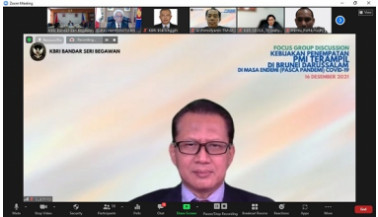
KBRI Bandar Seri Begawan Kumpulkan Gagasan Strategi Peningkatan Penempatan Pekerja Terampil di Brunei
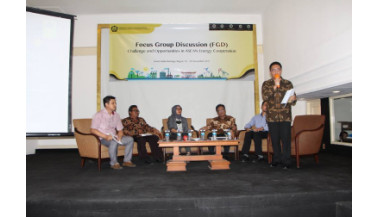
Ditjen Gatrik Selenggarakan FGD Kerja Sama Energi ASEAN
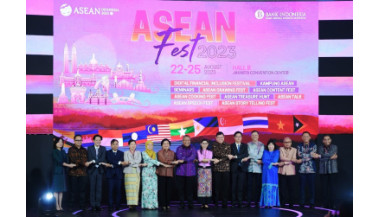
Masyarakat ASEAN, Masyarakat Tangguh
- Advertise With Us

How to Enter Indonesia from 7th January – Quarantine, Testing, Vaccines, and more
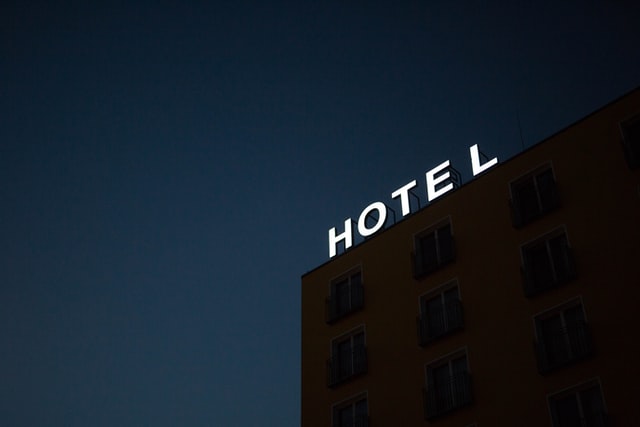
The COVID-19 Task Force has issued the latest regulations for international travellers, both Indonesian citizens and foreigners, taking effect on 7th January until further notice.
Countries temporarily banned.
- Confirmed existence of community transmission of the Omicron variant, namely South Africa, Botswana, Norway, and France.
- Countries or regions that are geographically close to a community transmission country of Omicron variant cases such as Angola, Zambia, Zimbabwe, Malawi, Mozambique, Namibia, Eswatini, and Lesotho.
- Countries or regions with more than 10,000 confirmed cases of Omicron such as the UK and Denmark.
- Have no travel history and haven’t stayed in one of these countries within 14 days.
- In accordance with the provisions in the Home Affairs Minister regulation No. 34 of 2021 regarding the granting of visas and immigration residence permits during the handling of the spread of COVID-19 and the recovery of the national economy.
- In accordance with the bilateral agreement scheme, such as the Travel Corridor Arrangement, or obtaining permission or special consideration in writing from any ministry or agency.
Vaccination Requirements
- Diplomatic and service visa holders
- Foreign officials with ministerial level and above and their entourage when making official or state visits Via a Travel Corridor Arrangement
- Delegations of G20 member countries
- Honorable and distinguished people
- Via airport entry points in Bali and the Riau Islands
- In addition to a vaccination card or certificate and a negative PCR result, they must attach a short visit visa or another entry permit, proof of ownership of health insurance worth a minimum of US$100,000 which includes financing for handling COVID-19, and proof of booking confirmation and payment for accommodation.
Related posts
Crafting your brand in a wellness way with dr. tyler bigenho at the westin resort & spa ubud, bali, two killed, four injured in 6.9 magnitude banten-jakarta earthquake, independence day and collective amnesia, official eid holiday and joint leave, jis learning center: every child has the right to learn, canadian teacher convicted of child sexual assault in 2014 released.
Vol 71 – TRAVEL CORRIDOR ARRANGEMENTS: BETWEEN ECONOMIC AND HEALTH INTERESTS
TRAVEL CORRIDOR ARRANGEMENTS: BETWEEN ECONOMIC AND HEALTH INTERESTS

An article by the AHA Centre’s own Grace Endina – a preparedness and response officer in the ASEAN Emergency Response and Assessment Team (ASEAN-ERAT) – was recently published on the Jakarta Post’s website. Named Travel corridor arrangements: Between economic and health interests, this article provides an insight into travel during the time of pandemic, and highlights areas for learning that could be utilised during this or future pandemics. The following are excerpts from Grace’s article, with the full version linked at the end of the text.
I am one of the few people who were fortunate to be able to travel amid the pandemic, flying from Jakarta to Yangon, Myanmar. Indeed, it was really challenging even before I hopped on the flight in my mask and face shield, and with my handy bottle of hand sanitizer. Thanks to the pandemic, I had to transit in Singapore and then Malaysia, due to the different procedures in each country. These included the validity period of COVID-19 test results, flight availability, sudden visa requirements and transit restrictions for passengers arriving from certain cities.
At Yangon International Airport, airport authorities and officers from the Ministry of Health strictly recorded passengers’ data and then transported them via a shuttle service to a designated quarantine hotel. Foreigners were taken to one hotel, where we were required to self-quarantine for exactly two weeks. Another interesting observation was the rather long time that passed between arriving flights at the three airports, which I guess was intended to enable airport authorities and health officials to manage and control the arrival of international travelers.
The most interesting aspect was the quarantine process and period. While some studies have suggested that the coronavirus may not be detected in the early days of exposure, each country applied different quarantine periods and different swab testing frequencies and intervals for travelers. Singapore and Myanmar, for instance, imposed a very strict quarantine period of 14 days and required two polymerase chain reaction (PCR) tests. Once you exit the immigration counters in these countries, you are transported on a bus to the designated quarantine hotel, accompanied by airport authorities. The airport authorities have already booked your hotel for the quarantine period, so you have no options to stay at different hotel. The quarantine hotels are not open to regular guests. Meanwhile, in Indonesia, the quarantine period is currently five days with two PCR tests. As soon as you exit the airport, salespeople from designated quarantine hotels and designated taxi companies offer their services to arriving travelers who do not have bookings yet.
My experience traveling during COVID-19 showed that each country has adopted different arrival procedures and quarantine protocols. I guess this depends mainly on the availability of their resources and interests in view of restoring essential business services. While it is clear that the generally prescribed quarantine period is 14 days, there is no prescribed method for how best to manage airports amid the pandemic. The health sector advises travelers to quarantine for 14 days without taking an immediate swab test, but others may think differently in terms of issues of practicality rather than what should be done from the perspective of public health. With these different standards for travel corridor arrangements, is it possible to protect business interests and public health at the same time?

Written by : Grace Endina
About AHA Centre
What you can read next, vol 60 – fun way to learn disaster through a game.
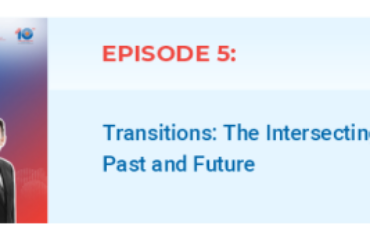
Vol 82 – AHA CENTRE PODCAST SERIES: AT THE CROSSROADS
Vol 67 – 12 years of the asean-erat missions.
ASEAN Coordinating Centre for H umanitarian Assistance on disaster management
Indonesia: Update On Indonesia Travel Policies During Covid-19

The Indonesian Covid-19 Task Force ( Satuan Tugas Penanganan Covid-19 ) has announed new policies for domestic and international travel effective as of March 8, 2022. The following is a summary of key points.
You can find more information on the latest travel policies here .
All travelers must comply with the health protocols set forth by the Indonesian Covid-19 Task Force:
- Use a three-ply cloth mask or a medical mask that covers the nose, mouth and chin;
- Change masks regularly every four hours and dispose of old masks in provided places;
- Wash hands regularly using water and soap or hand sanitizer, especially after touching objects touched by other people;
- Maintain a minimum distance of 1.5 meters from other people and avoid crowds;
- Not allowed to speak on the telephone or face to face while on public transportation (land, rail, sea, river, lake, and air); and
- Not allowed to eat or drink during flights that are less than two hours long, except for individuals who must take medicine for their health and safety.
The following is a summary of the newest travel policies:
International Travel Through Entry Points in Bali, Batam and Bintan
Entry Points
- Bali: I Gusti Ngurah Rai International Airport and Tanjung Benoa Harbor
- Batam: Hang Nadim International Airport and Batam Harbor
- Bintan: Raja Haji Fisabilillah International Airport, Bintan Harbor and Tanjung Pinang Harbor
Proof of Vaccination Requirement
Travelers must provide a card/certificate (physical/digital) evidencing they have received a second dose of a Covid-19 vaccine at least 14 days prior to their departure. The card/certificate must be verified on the website of the Ministry of Health or e-HAC (Indonesian Electronic Health Alert Card).
Covid-19 Testing Requirement
- Pre-Departure: Travelers are required to provide a negative RT-PCR test result taken within 2x24 hours before departure time in their origin country/region.
- Post-Arrival: Travelers are required to take a RT-PCR test upon arrival and are prohibited to leave their accomodation before the result is released. If the result is negative, travelers are allowed to continue their activities as usual. If the result is positive, travelers must be isolated or treated. On the third day after arrival , travelers are required to take a second RT-PCR test and may only continue their activities if the result is negative.
Quarantine Requirement
International travelers entering Indonesia through Bali, Batam and Bintan are not required to be quarantined.
International Travel
- Airports: Soekarno-Hatta in Banten; Juanda in East Java; Sam Ratulangi in North Sulawesi; and Zainuddin Abdul Madjid in West Nusa Tenggara.
- Harbor: Nunukan in North Borneo.
- Cross-Border Posts: Aruk in West Borneo; Entikong in West Borneo; and Motaain in East Nusa Tenggara.
Travelers must provide a card/certificate (physical/digital) evidencing they have received a second dose of a Covid-19 vaccine at least 14 days prior to their departure. Unvaccinated travelers shall be vaccinated in quarantine/supervision facilities upon arrival after receiving a second negative RT-PCR result.
- Pre-Departure: Travelers are required to provide negative RT-PCR test result taken within 2x24 hours before departure time in their origin country/region.
- Post-Arrival: Travelers are required to take a RT-PCR test upon arrival . Quarantined travelers shall take a second RT-PCR test on the sixth day of quarantine . Travelers who are only supervised and not quarantined shall independently take a second RT-PCR test on the third day after their arrival .
Travelers who have received only the first dose of a Covid-19 vaccine must be quarantined for 7x24 hours . Travelers who have received a second or third dose of a Covid-19 vaccine shall be supervised for 1x24 hours . For travelers under the age of 18, the quarantine/supervision requirement shall follow the applicable requirement for their parents/caretakers/companions.
- Exemption from providing proof of vaccination for: Foreign travelers holding diplomatic/service visa; foreign travelers entering Indonesia through a Travel Corridor Arrangement scheme; unvaccinated foreign travelers planning to leave Indonesia through domestic transit as long as they do not leave the airport area; travelers under the age of 18; and travelers ineligible to receive Covid-19 vaccine for health reasons.
- Dispensation (approval of application for exemption) for quarantine or supervision requirement may be given to: Indonesian travelers with an urgent situation provided that the result of the RT-PCR test taken upon arrival is negative; foreign travelers in their capacity as head of foreign representative office on duty in Indonesia and their families.
- Dispensation of quarantine or supervision with the implementation of the travel bubble system and/or strict health protocols may be given to foreign travelers who meet one of the following criteria: Holders of diplomatic/service visa; foreign officials at ministerial level or above and their entourages making official/state visit; travelers entering Indonesia through a Travel Corridor Arrangement; delegations of G20 member countries; and respected and prominent travelers.
Domestic Travel
Travelers who have received a second or third dose of a Covid-19 vaccine are not required to provide RT-PCR or rapid test antigen test result. Travelers who have only received the first dose of a Covid-19 vaccine and travelers who are unvaccinated for health reasons are required to provide a negative RT-PCR test result taken within 3x24 hours before departure or a rapid antigen test taken within 1x24 hours before departure.
Domestic travelers are not required to be quarantined .
Travelers using pioneer mode of transportation ( moda transportasi perintis ) to, from, and between remote and underdeveloped areas are exempted from all travel requirements; and travelers using land transportation modes within one urban agglomeration area are exempted from Covid-19 testing requirement.
The content of this article is intended to provide a general guide to the subject matter. Specialist advice should be sought about your specific circumstances.
© Mondaq® Ltd 1994 - 2024. All Rights Reserved .
Login to Mondaq.com
Password Passwords are Case Sensitive
Forgot your password?
Why Register with Mondaq
Free, unlimited access to more than half a million articles (one-article limit removed) from the diverse perspectives of 5,000 leading law, accountancy and advisory firms
Articles tailored to your interests and optional alerts about important changes
Receive priority invitations to relevant webinars and events
You’ll only need to do it once, and readership information is just for authors and is never sold to third parties.
Your Organisation
We need this to enable us to match you with other users from the same organisation. It is also part of the information that we share to our content providers ("Contributors") who contribute Content for free for your use.



5 Key Initiatives to Safely Reopen Borders in ASEAN
03:53 pm | 04 August 2021
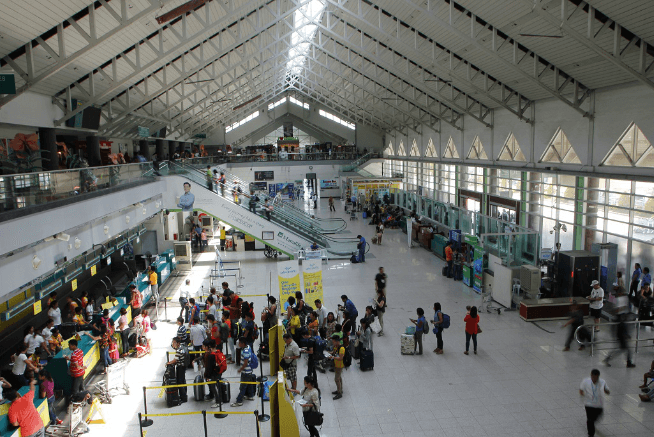
Aside from mass vaccination, members of the Association of Southeast Asian Nations (ASEAN) are working together on five key initiatives that will enable them to safely resume regional travel and tourism during the coronavirus disease (COVID-19) pandemic.
1. Create a regional travel corridor. In November last year, ASEAN leaders agreed to draw up a travel corridor arrangement framework that will allow essential business travel first among member states while prioritizing public health safety. They called for a common set of pre-departure and post-arrival health and safety measures. Travelers must follow public health regulations in their destination. The ASEAN Coordinating Council, supported by the ASEAN Coordinating Council Working Group on Public Health Emergencies, will coordinate and oversee the process of developing the travel corridor framework, taking into account bilateral arrangements of ASEAN member states. Last month, tourism ministers in the region expressed optimism that the regional travel corridor will be extended to tourists later . 2. Enhance tourism workers’ hygiene and safety practices. ASEAN is developing guidelines on hygiene and safety for workers and communities in the tourism industry with the support of the Australian Government through the Australia-ASEAN Development Cooperation Programme Phase 2. The guidelines are expected to be completed this year. 3. Harness technology for safe and seamless travel. At the ASEAN Summit in November, the heads of state encouraged the use of digital solutions to promote safe and seamless travel in Southeast Asia during and after the pandemic and to ease travel at entry/exit points, such as through contactless immigration processes and payment, and interoperable mobile contact tracing applications. 4. Improve airline operations toward increased protection and safety of passengers and air crew members. Transport ministers have endorsed the first set of ASEAN-wide COVID-19 operational guidelines for the protection and safety of passengers and operational air crew , as well as cleaning and disinfection of aircraft. The broad and non-binding operational guidelines are in line with recommendations of the International Civil Aviation Organization (ICAO) Council Aviation Recovery Taskforce (CART) to mitigate the risk of COVID-19 transmission. 5. Use a digital vaccination certificate.
This month, among the proposals that ASEAN economic ministers discussed is the development of common protocols for a digital health or vaccination certificate that may be used by travelers. This is similar to the Digital Green Pass that the European Commission is studying to facilitate travel for inoculated individuals within its region.
This article was first published by BIMP-EAGA on 12 March 2021.
Experts Talk Solutions: Budi Gunadi Sadikin
Asean taxonomy defines sustainable activities in transport, construction sectors, asia-pacific trade facilitation report 2024: promoting sustainability and resilience of global value chains, reuse of electric vehicle batteries in asean, asean finance ministers take on pivotal role in climate action, related articles, joint bimp‑eaga and imt-gt tourism recovery communications plan and toolkit 2022–2024, it's time for southeast asia to fix structural issues plaguing tourism, embed sustainability thinking in every decision and policy on tourism, how coron and el nido in palawan can curb overtourism, why southeast asia needs to embrace sustainable tourism.

Want to Learn More?
Subscribe to the Newsletter
Email Address Submit
TheJakartaPost
Please Update your browser
Your browser is out of date, and may not be compatible with our website. A list of the most popular web browsers can be found below. Just click on the icons to get to the download page.
- Destinations
- Jakpost Guide to
- Newsletter New
- Mobile Apps
- Tenggara Strategics
- B/NDL Studios
- Archipelago
- Election 2024
- Regulations
- Asia & Pacific
- Middle East & Africa
- Entertainment
- Arts & Culture
- Environment
- Work it Right
- Quick Dispatch
- Longform Biz
Travel corridor arrangements: Between economic and health interests
Travel corridor arrangements vary depending on the airport in terms of preflight requirements and COVID-19 quarantine procedures for travelers, so it is not clear that the scheme can fulfill the double duty of protecting both economic and health interests.
Share This Article
Change size.
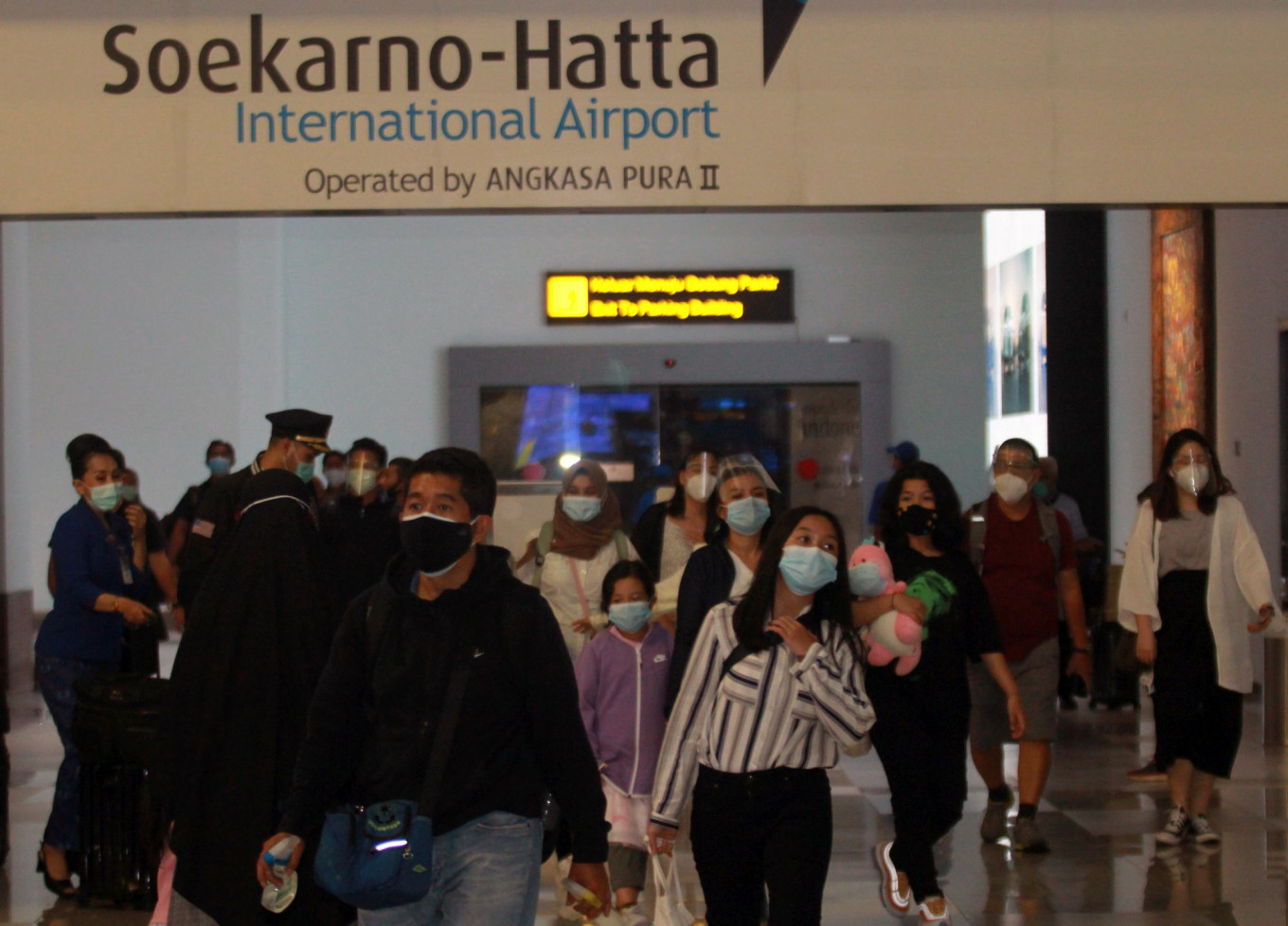
It has been a year since COVID-19 restrictions across the globe made international travel a thing of the past. The impacts of the pandemic did not only cause the collapse of public health systems, but it has also obliterated economic sectors. In an attempt to restore essential travel, countries have set up travel corridor arrangements to revive ailing domestic economies while maintaining low infection rates at the same time.
I am one of the few people who were fortunate to be able to travel amid the pandemic, flying from Jakarta to Yangon, Myanmar. Indeed, it was really challenging even before I hopped on the flight in my mask and face shield, and with my handy bottle of hand sanitizer.
Thanks to the pandemic, I had to transit in Singapore and then Malaysia, due to the different procedures in each country. These included the validity period of COVID-19 test results, flight availability, sudden visa requirements and transit restrictions for passengers arriving from certain cities.
What I observed while passing through the different airports in Indonesia, Singapore, Malaysia and Myanmar was how their health protocols were applied. Once we landed at Singapore Changi Airport, we were escorted to either a common transit gate to wait for our next flight or an airport transit hotel. Transit passengers were not allowed to wander around the airport. As a matter of fact, Changi airport was not the busy travel hub that I remembered, as most shops were closed and the terminal looked empty.
It was completely different at Malaysia’s Kuala Lumpur International Airport (KLIA), where transit passengers were allowed to roam freely in the main terminal as well as the airport annex. As expected, there were not many travelers, but shops selling essential needs were open, probably because passengers were allowed inside the terminal.
At Yangon International Airport, airport authorities and officers from the Ministry of Health strictly recorded passengers’ data and then transported them via a shuttle service to a designated quarantine hotel. Foreigners were taken to one hotel, where we were required to self-quarantine for exactly two weeks.
Another interesting observation was the rather long time that passed between arriving flights at the three airports, which I guess was intended to enable airport authorities and health officials to manage and control the arrival of international travelers. On the other hand, although Soekarno-Hatta International Airport was not as busy as before the pandemic, passengers on different flights were still arriving almost at the same time.
The most interesting aspect was the quarantine process and period. While some studies have suggested that the coronavirus may not be detected in the early days of exposure, each country applied different quarantine periods and different swab testing frequencies and intervals for travelers.
Singapore and Myanmar, for instance, imposed a very strict quarantine period of 14 days and required two polymerase chain reaction (PCR) tests. Once you exit the immigration counters in these countries, you are transported on a bus to the designated quarantine hotel, accompanied by airport authorities. The airport authorities have already booked your hotel for the quarantine period, so you have no options to stay at different hotel. The quarantine hotels are not open to regular guests.
Meanwhile, in Indonesia, the quarantine period is currently five days with two PCR tests. As soon as you exit the airport, salespeople from designated quarantine hotels and designated taxi companies offer their services to arriving travelers who do not have bookings yet. The good thing is that there are many hotel options for travelers to choose from for their quarantine period, ranging from three-star to five-star hotels.
Interestingly, the designated quarantine hotels also accept regular guests seeking staycations.
According to February 2021 data from the national COVID-19 task force, 1.1 percent of a total of 1,060 international travelers tested positive for the virus. Moreover, the task force stressed the fact that the results of the mandatory predeparture COVID tests for international travelers were not always valid. Therefore, applying a set of very strict procedures to welcome these travelers at airports, including quarantine process and regulations, are ultimately important in order to contain the spread of the virus.
My experience traveling during COVID-19 showed that each country has adopted different arrival procedures and quarantine protocols. I guess this depends mainly on the availability of their resources and interests in view of restoring essential business services. While it is clear that the generally prescribed quarantine period is 14 days, there is no prescribed method for how best to manage airports amid the pandemic.
The health sector advises travelers to quarantine for 14 days without taking an immediate swab test, but others may think differently in terms of issues of practicality rather than what should be done from the perspective of public health.
With these different standards for travel corridor arrangements, is it possible to protect business interests and public health at the same time?
The writer is a preparedness and response officer at the ASEAN Emergency Response and Assessment Team (ASEAN-ERAT).

Women in philanthropy: Fifi Pangestu’s leadership and vision in Bakti Barito Foundation

Philippines to endure extreme heat until mid-May

Magnitude 6.5 earthquake strikes off Java island: authorities
Related articles, last chance for pandemic agreement talks, luhut pitches national projects to incoming singaporean pm, outgoing prime minister lee to serve as singapore's senior minister, critical moment: turning disagreement into a pandemic agreement, pope to visit indonesia, png, east timor, singapore in september, related article, more in academia.
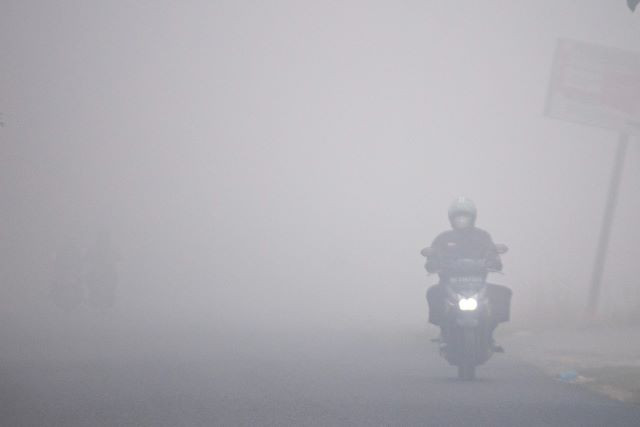
Questioning ADB’s approach to resource conservation and pollution prevention
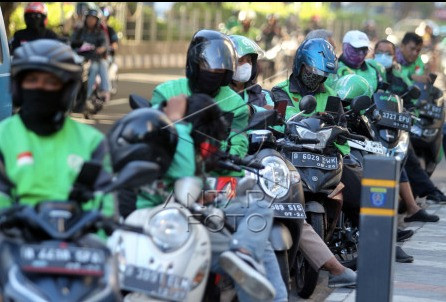
The cries of labor should be heeded amid the digital economy thrills
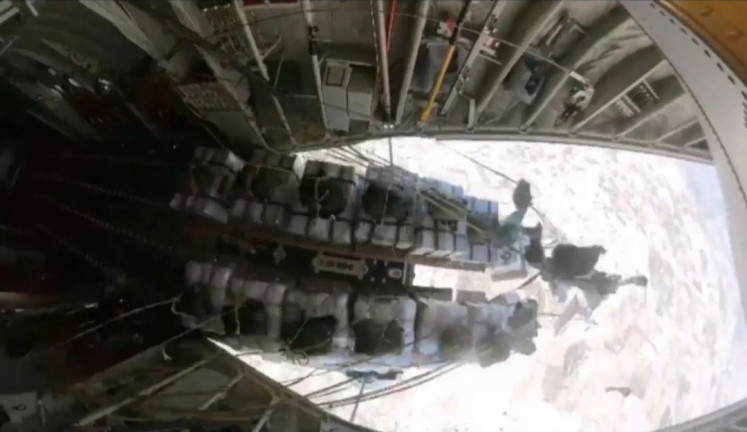
Indonesia’s foreign policy in ‘the multiverse of madness‘
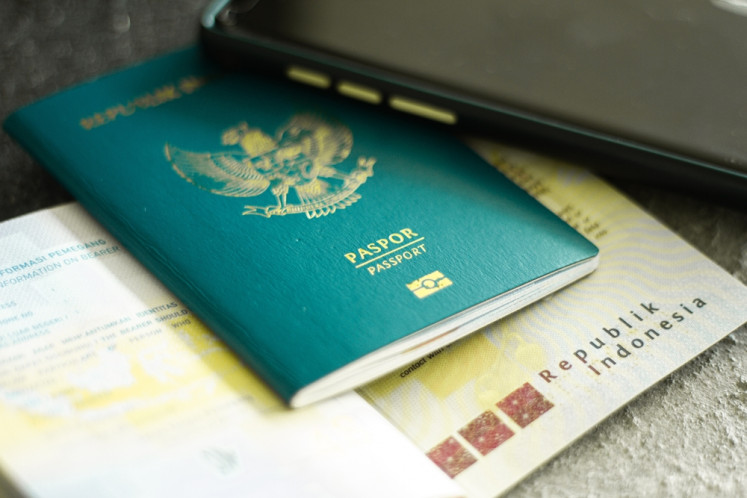
Indonesia may offer dual citizenship to attract overseas workers, minister says
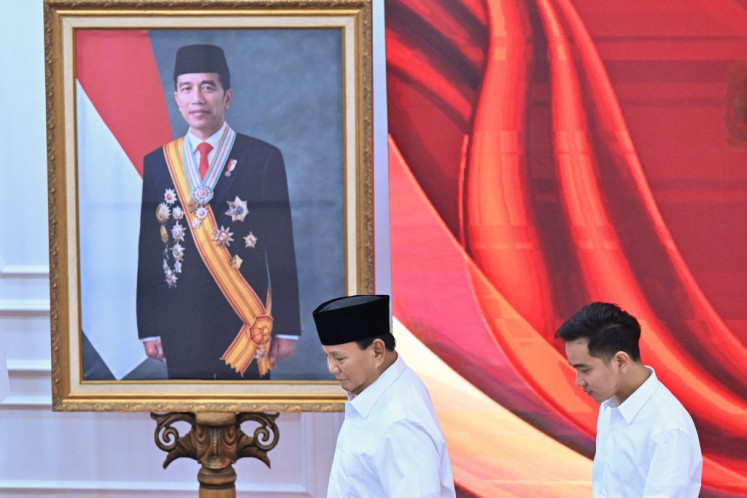
On letting go
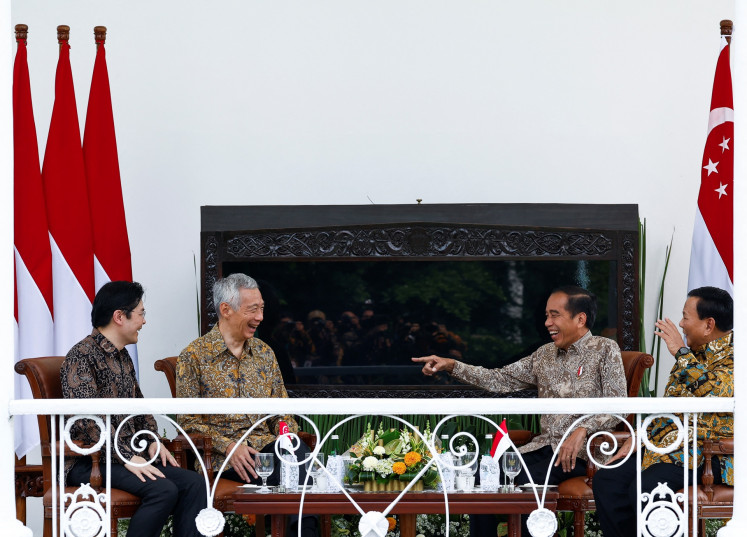
Jokowi, Lee in final retreat call on successors to maintain strong ties
Benq, right partner to accelerate quality of education in indonesia, indosat's exceptional growth fuels ambition to empower indonesia with ai, ri, singapore move forward with solar power export plan, in numbers: how women fare in indonesia, financial times enters chatgpt content deal, philippines accuses china of damaging its vessel at hotly contested shoal, afpi projects conservative growth amid macro woes, stringent rules.
- Jakpost Guide To
- Art & Culture
- Today's Paper
- Southeast Asia
- Cyber Media Guidelines
- Paper Subscription
- Privacy Policy
- Discussion Guideline
- Term of Use
© 2016 - 2024 PT. Bina Media Tenggara
Your Opinion Matters
Share your experiences, suggestions, and any issues you've encountered on The Jakarta Post. We're here to listen.
Thank you for sharing your thoughts. We appreciate your feedback.
Russia Travel Blog | All about Russia in English
- About our blog
- RussiaTrek.org
Sidebar →
- Architecture
- Entertainment
- RussiaTrek.org News

- Send us a tip with a message
- Support RussiaTrek.org
- Travel Guide to Ukraine
- Comments RSS
← Sidebar
The trains and stations of the Moscow Metro
2 Comments · Posted by Alex Smirnov in Cities , Travel , Video
The Moscow Metro is the third most intensive subway system in the world after Tokyo and Seoul subways. The first line was opened on May 15, 1935. Since 1955, the metro has the name of V.I. Lenin.
The system consists of 12 lines with a total length of 305.7 km. Forty four stations are recognized cultural heritage. The largest passenger traffic is in rush hours from 8:00 to 9:00 and from 18:00 to 19:00.
Cellular communication is available on most of the stations of the Moscow Metro. In March 2012, a free Wi-Fi appeared in the Circle Line train. The Moscow Metro is open to passengers from 5:20 to 01:00. The average interval between trains is 2.5 minutes.
The fare is paid by using contactless tickets and contactless smart cards, the passes to the stations are controlled by automatic turnstiles. Ticket offices and ticket vending machines can be found in station vestibules.
Tags: Moscow city
You might also like:

The bridge over Zolotoy Rog Bay in Vladivostok
The views of St. Petersburg from the TV tower >>
Tomás · August 27, 2012 at 11:34 pm
The Moscow metro stations are the best That I know, cars do not.
Alberto Calvo · September 25, 2016 at 8:57 pm
Great videos! Moscow Metro is just spectacular. I actually visited Moscow myself quite recently and wrote a post about my top 7 stations, please check it out and let me know what you think! :)
http://www.arwtravels.com/blog/moscow-metro-top-7-stations-you-cant-miss
Leave a Reply
XHTML: You can use these tags: <a href="" title=""> <abbr title=""> <acronym title=""> <b> <blockquote cite=""> <cite> <code> <del datetime=""> <em> <i> <q cite=""> <s> <strike> <strong>
- February 2024
- January 2024
- December 2023
- November 2023
- October 2023
- September 2023
- August 2023
- Articles >
The Moscow Metro Museum of Art: 10 Must-See Stations
There are few times one can claim having been on the subway all afternoon and loving it, but the Moscow Metro provides just that opportunity. While many cities boast famous public transport systems—New York’s subway, London’s underground, San Salvador’s chicken buses—few warrant hours of exploration. Moscow is different: Take one ride on the Metro, and you’ll find out that this network of railways can be so much more than point A to B drudgery.
The Metro began operating in 1935 with just thirteen stations, covering less than seven miles, but it has since grown into the world’s third busiest transit system ( Tokyo is first ), spanning about 200 miles and offering over 180 stops along the way. The construction of the Metro began under Joseph Stalin’s command, and being one of the USSR’s most ambitious building projects, the iron-fisted leader instructed designers to create a place full of svet (radiance) and svetloe budushchee (a radiant future), a palace for the people and a tribute to the Mother nation.
Consequently, the Metro is among the most memorable attractions in Moscow. The stations provide a unique collection of public art, comparable to anything the city’s galleries have to offer and providing a sense of the Soviet era, which is absent from the State National History Museum. Even better, touring the Metro delivers palpable, experiential moments, which many of us don’t get standing in front of painting or a case of coins.
Though tours are available , discovering the Moscow Metro on your own provides a much more comprehensive, truer experience, something much less sterile than following a guide. What better place is there to see the “real” Moscow than on mass transit: A few hours will expose you to characters and caricatures you’ll be hard-pressed to find dining near the Bolshoi Theater. You become part of the attraction, hear it in the screech of the train, feel it as hurried commuters brush by: The Metro sucks you beneath the city and churns you into the mix.
With the recommendations of our born-and-bred Muscovite students, my wife Emma and I have just taken a self-guided tour of what some locals consider the top ten stations of the Moscow Metro. What most satisfied me about our Metro tour was the sense of adventure . I loved following our route on the maps of the wagon walls as we circled the city, plotting out the course to the subsequent stops; having the weird sensation of being underground for nearly four hours; and discovering the next cavern of treasures, playing Indiana Jones for the afternoon, piecing together fragments of Russia’s mysterious history. It’s the ultimate interactive museum.
Top Ten Stations (In order of appearance)
Kievskaya station.

Kievskaya Station went public in March of 1937, the rails between it and Park Kultury Station being the first to cross the Moscow River. Kievskaya is full of mosaics depicting aristocratic scenes of Russian life, with great cameo appearances by Lenin, Trotsky, and Stalin. Each work has a Cyrillic title/explanation etched in the marble beneath it; however, if your Russian is rusty, you can just appreciate seeing familiar revolutionary dates like 1905 ( the Russian Revolution ) and 1917 ( the October Revolution ).
Mayakovskaya Station
Mayakovskaya Station ranks in my top three most notable Metro stations. Mayakovskaya just feels right, done Art Deco but no sense of gaudiness or pretention. The arches are adorned with rounded chrome piping and create feeling of being in a jukebox, but the roof’s expansive mosaics of the sky are the real showstopper. Subjects cleverly range from looking up at a high jumper, workers atop a building, spires of Orthodox cathedrals, to nimble aircraft humming by, a fleet of prop planes spelling out CCCP in the bluest of skies.
Novoslobodskaya Station

Novoslobodskaya is the Metro’s unique stained glass station. Each column has its own distinctive panels of colorful glass, most of them with a floral theme, some of them capturing the odd sailor, musician, artist, gardener, or stenographer in action. The glass is framed in Art Deco metalwork, and there is the lovely aspect of discovering panels in the less frequented haunches of the hall (on the trackside, between the incoming staircases). Novosblod is, I’ve been told, the favorite amongst out-of-town visitors.
Komsomolskaya Station
Komsomolskaya Station is one of palatial grandeur. It seems both magnificent and obligatory, like the presidential palace of a colonial city. The yellow ceiling has leafy, white concrete garland and a series of golden military mosaics accenting the tile mosaics of glorified Russian life. Switching lines here, the hallway has an Alice-in-Wonderland feel, impossibly long with decorative tile walls, culminating in a very old station left in a remarkable state of disrepair, offering a really tangible glimpse behind the palace walls.
Dostoevskaya Station

Dostoevskaya is a tribute to the late, great hero of Russian literature . The station at first glance seems bare and unimpressive, a stark marble platform without a whiff of reassembled chips of tile. However, two columns have eerie stone inlay collages of scenes from Dostoevsky’s work, including The Idiot , The Brothers Karamazov , and Crime and Punishment. Then, standing at the center of the platform, the marble creates a kaleidoscope of reflections. At the entrance, there is a large, inlay portrait of the author.
Chkalovskaya Station
Chkalovskaya does space Art Deco style (yet again). Chrome borders all. Passageways with curvy overhangs create the illusion of walking through the belly of a chic, new-age spacecraft. There are two (kos)mosaics, one at each end, with planetary subjects. Transferring here brings you above ground, where some rather elaborate metalwork is on display. By name similarity only, I’d expected Komsolskaya Station to deliver some kosmonaut décor; instead, it was Chkalovskaya that took us up to the space station.
Elektrozavodskaya Station

Elektrozavodskaya is full of marble reliefs of workers, men and women, laboring through the different stages of industry. The superhuman figures are round with muscles, Hollywood fit, and seemingly undeterred by each Herculean task they respectively perform. The station is chocked with brass, from hammer and sickle light fixtures to beautiful, angular framework up the innards of the columns. The station’s art pieces are less clever or extravagant than others, but identifying the different stages of industry is entertaining.
Baumanskaya Statio
Baumanskaya Station is the only stop that wasn’t suggested by the students. Pulling in, the network of statues was just too enticing: Out of half-circle depressions in the platform’s columns, the USSR’s proud and powerful labor force again flaunts its success. Pilots, blacksmiths, politicians, and artists have all congregated, posing amongst more Art Deco framing. At the far end, a massive Soviet flag dons the face of Lenin and banners for ’05, ’17, and ‘45. Standing in front of the flag, you can play with the echoing roof.
Ploshchad Revolutsii Station

Novokuznetskaya Station
Novokuznetskaya Station finishes off this tour, more or less, where it started: beautiful mosaics. This station recalls the skyward-facing pieces from Mayakovskaya (Station #2), only with a little larger pictures in a more cramped, very trafficked area. Due to a line of street lamps in the center of the platform, it has the atmosphere of a bustling market. The more inventive sky scenes include a man on a ladder, women picking fruit, and a tank-dozer being craned in. The station’s also has a handsome black-and-white stone mural.
Here is a map and a brief description of our route:
Start at (1)Kievskaya on the “ring line” (look for the squares at the bottom of the platform signs to help you navigate—the ring line is #5, brown line) and go north to Belorusskaya, make a quick switch to the Dark Green/#2 line, and go south one stop to (2)Mayakovskaya. Backtrack to the ring line—Brown/#5—and continue north, getting off at (3)Novosblodskaya and (4)Komsolskaya. At Komsolskaya Station, transfer to the Red/#1 line, go south for two stops to Chistye Prudy, and get on the Light Green/#10 line going north. Take a look at (5)Dostoevskaya Station on the northern segment of Light Green/#10 line then change directions and head south to (6)Chkalovskaya, which offers a transfer to the Dark Blue/#3 line, going west, away from the city center. Have a look (7)Elektroskaya Station before backtracking into the center of Moscow, stopping off at (8)Baumskaya, getting off the Dark Blue/#3 line at (9)Ploschad Revolyutsii. Change to the Dark Green/#2 line and go south one stop to see (10)Novokuznetskaya Station.
Check out our new Moscow Indie Travel Guide , book a flight to Moscow and read 10 Bars with Views Worth Blowing the Budget For
Jonathon Engels, formerly a patron saint of misadventure, has been stumbling his way across cultural borders since 2005 and is currently volunteering in the mountains outside of Antigua, Guatemala. For more of his work, visit his website and blog .

Photo credits: SergeyRod , all others courtesy of the author and may not be used without permission
Claudia Looi
Touring the Top 10 Moscow Metro Stations
By Claudia Looi 2 Comments

Komsomolskaya metro station looks like a museum. It has vaulted ceilings and baroque decor.
Hidden underground, in the heart of Moscow, are historical and architectural treasures of Russia. These are Soviet-era creations – the metro stations of Moscow.
Our guide Maria introduced these elaborate metro stations as “the palaces for the people.” Built between 1937 and 1955, each station holds its own history and stories. Stalin had the idea of building beautiful underground spaces that the masses could enjoy. They would look like museums, art centers, concert halls, palaces and churches. Each would have a different theme. None would be alike.
The two-hour private tour was with a former Intourist tour guide named Maria. Maria lived in Moscow all her life and through the communist era of 60s to 90s. She has been a tour guide for more than 30 years. Being in her 60s, she moved rather quickly for her age. We traveled and crammed with Maria and other Muscovites on the metro to visit 10 different metro stations.

Arrow showing the direction of metro line 1 and 2

Moscow subways are very clean
To Maria, every street, metro and building told a story. I couldn’t keep up with her stories. I don’t remember most of what she said because I was just thrilled being in Moscow. Added to that, she spilled out so many Russian words and names, which to one who can’t read Cyrillic, sounded so foreign and could be easily forgotten.
The metro tour was the first part of our all day tour of Moscow with Maria. Here are the stations we visited:
1. Komsomolskaya Metro Station is the most beautiful of them all. Painted yellow and decorated with chandeliers, gold leaves and semi precious stones, the station looks like a stately museum. And possibly decorated like a palace. I saw Komsomolskaya first, before the rest of the stations upon arrival in Moscow by train from St. Petersburg.
2. Revolution Square Metro Station (Ploshchad Revolyutsii) has marble arches and 72 bronze sculptures designed by Alexey Dushkin. The marble arches are flanked by the bronze sculptures. If you look closely you will see passersby touching the bronze dog's nose. Legend has it that good luck comes to those who touch the dog's nose.

Touch the dog's nose for good luck. At the Revolution Square station

Revolution Square Metro Station
3. Arbatskaya Metro Station served as a shelter during the Soviet-era. It is one of the largest and the deepest metro stations in Moscow.

Arbatskaya Metro Station
4. Biblioteka Imeni Lenina Metro Station was built in 1935 and named after the Russian State Library. It is located near the library and has a big mosaic portrait of Lenin and yellow ceramic tiles on the track walls.

Lenin's portrait at the Biblioteka Imeni Lenina Metro Station

5. Kievskaya Metro Station was one of the first to be completed in Moscow. Named after the capital city of Ukraine by Kiev-born, Nikita Khruschev, Stalin's successor.

Kievskaya Metro Station
6. Novoslobodskaya Metro Station was built in 1952. It has 32 stained glass murals with brass borders.

Novoslobodskaya metro station
7. Kurskaya Metro Station was one of the first few to be built in Moscow in 1938. It has ceiling panels and artwork showing Soviet leadership, Soviet lifestyle and political power. It has a dome with patriotic slogans decorated with red stars representing the Soviet's World War II Hall of Fame. Kurskaya Metro Station is a must-visit station in Moscow.

Ceiling panel and artworks at Kurskaya Metro Station

8. Mayakovskaya Metro Station built in 1938. It was named after Russian poet Vladmir Mayakovsky. This is one of the most beautiful metro stations in the world with 34 mosaics painted by Alexander Deyneka.

Mayakovskaya station

One of the over 30 ceiling mosaics in Mayakovskaya metro station
9. Belorusskaya Metro Station is named after the people of Belarus. In the picture below, there are statues of 3 members of the Partisan Resistance in Belarus during World War II. The statues were sculpted by Sergei Orlov, S. Rabinovich and I. Slonim.

10. Teatralnaya Metro Station (Theatre Metro Station) is located near the Bolshoi Theatre.

Teatralnaya Metro Station decorated with porcelain figures .

Taking the metro's escalator at the end of the tour with Maria the tour guide.
Have you visited the Moscow Metro? Leave your comment below.
January 15, 2017 at 8:17 am
An excellent read! Thanks for much for sharing the Russian metro system with us. We're heading to Moscow in April and exploring the metro stations were on our list and after reading your post, I'm even more excited to go visit them. Thanks again 🙂
December 6, 2017 at 10:45 pm
Hi, do you remember which tour company you contacted for this tour?
Leave a Reply Cancel reply
You must be logged in to post a comment.
Please go to the Instagram Feed settings page to create a feed.

IMAGES
COMMENTS
Mon, 22 Feb 2021. With an estimate of US$5.8 billion being wiped from Indonesia's tourist revenues as of July 2020, the country plans to recover its coronavirus-battered economy strategically. The government has negotiated on building bilateral travel corridors with countries including the United Arab Emirates, China, South Korea, and Singapore.
ASEAN Declaration on an ASEAN Travel Corridor Arrangement Framework. November 12, 2020. WE, the Heads of State/Government of the Member States of the Association of Southeast Asian Nations (ASEAN), namely Brunei Darussalam, the Kingdom of Cambodia, the Republic of Indonesia, the Lao People's Democratic Republic, Malaysia, the Republic of the ...
Suggested for you. JAKARTA, 23 November 2022 - As an immediate response to recover tourism industry and relaxing the international travel restrictions, COVID-19 Task Force issued the Circular Letter of the COVID-19 Task Force Number 25 of 2022 concerning Health Protocols for International Travels during the COVID-19 Pandemic.
Travelers entering Indonesia through Travel Corridor. Arrangement scheme. Delegation of G20 member countries. Honorable person and distinguished person. With the condition of . implementing a bubble system and. strict health protocols, with the following criteria:
Those who are In accordance with a bilateral agreement scheme, such as the travel corridor arrangement (TCA); and/or; Those who have special consideration or permission in writing from a ministry or institution. Foreigners who hold diplomatic visas and service visas related to official/state visits of foreign officials at ministerial level and ...
10 Nov 2021 06:17PM (Updated: 10 Nov 2021 06:17PM) JAKARTA: The leaders of Indonesia and Malaysia said they have agreed to start a travel corridor arrangement (TCA) between the two countries with ...
The discussion on the Travel Corridor Arrangement (TCA) between the Indonesian and Singaporean governments will continue in the future, but technically and practically, there are still certain issues that the Indonesian government has not addressed effectively. This demonstrates that we are technically still waiting for the correct judgement while the COVID-19 pandemic's case count declines.
This exclusive arrangement, called travel bubble or corridor, allows people to move freely within the corridor sans the usual burdensome travel requirements, such as mandatory two-week quarantine upon arrival. Singapore, for example, has started setting up reciprocal green lanes for essential short-term business and official travel with a ...
The RGL will also be referred to by Indonesia as the Travel Corridor Arrangement (TCA). The RGL/TCA will enable cross-border travel for essential business and official purposes to resume between both countries. The eligible applicants for the RGL/TCA are Indonesian citizens as well as Singapore citizens and residents. These travellers will have ...
DECIDE to take steps towards the establishment of an ASEAN travel corridor arrangement framework to facilitate essential business travels among ASEAN Member States, while prioritising public health safety, particularly in controlling the transmission of the COVID-19, without precluding the application of the framework to other categories of ...
One of the key initiatives being prioritized as part of post-COVID-19 recovery is the ASEAN Travel Corridor Arrangement Framework (ATCAF), which has been in discussion since 2020. It aims to ...
Travel Corridor Arrangement/Fast Lane Indonesia-Tingkok. 26/08/2020. Travel Corridor Arrangement/Fast Lane Indonesia-Tiongkok bertujuan untuk memudahkan perjalanan untuk kegiatan bisnis, ketenagakerjaan, ekonomi, serta diplomatik dan dinas.
of the ASEAN Travel Corridor Arrangement Framework (ATCAF) and also looked forward to the operationalisation of ATCAF following its adoption by the 29th Meeting of the ASEAN Coordinating Council (ACC) on 2 August 2021. The Meeting appreciates ATCAF, which serves
In accordance with the bilateral agreement scheme, such as the Travel Corridor Arrangement, or obtaining permission or special consideration in writing from any ministry or agency. Vaccination Requirements. Travellers must show proof of a full course of COVID-19 vaccine through a physical or digital card or certificate, completed at least 14 ...
Named Travel corridor arrangements: Between economic and health interests, this article provides an insight into travel during the time of pandemic, and highlights areas for learning that could be utilised during this or future pandemics. The following are excerpts from Grace's article, with the full version linked at the end of the text.
Exemption from providing proof of vaccination for: Foreign travelers holding diplomatic/service visa; foreign travelers entering Indonesia through a Travel Corridor Arrangement scheme; unvaccinated foreign travelers planning to leave Indonesia through domestic transit as long as they do not leave the airport area; travelers under the age of 18 ...
1. Create a regional travel corridor. In November last year, ASEAN leaders agreed to draw up a travel corridor arrangement framework that will allow essential business travel first among member states while prioritizing public health safety. They called for a common set of pre-departure and post-arrival health and safety measures.
Travel corridor arrangements vary depending on the airport in terms of preflight requirements and COVID-19 quarantine procedures for travelers, so it is not clear that the scheme can fulfill the ...
4. ASEAN Declaration on an ASEAN Travel Corridor Arrangement Framework 5. Ha Noi Declaration on the Adoption of the Initiative for ASEAN Integration (IAI) Work Plan IV (2021-2025) 6. Report of the Mid-Term Review of the ASEAN Political-Security Community (APSC) Blueprint 2025 7. ASEAN Declaration on Digital Tourism 8. The Narrative of ASEAN ...
2 Comments · Posted by Alex Smirnov in Cities, Travel, Video. The Moscow Metro is the third most intensive subway system in the world after Tokyo and Seoul subways. The first line was opened on May 15, 1935. Since 1955, the metro has the name of V.I. Lenin.
Have a look (7)Elektroskaya Station before backtracking into the center of Moscow, stopping off at (8)Baumskaya, getting off the Dark Blue/#3 line at (9)Ploschad Revolyutsii. Change to the Dark Green/#2 line and go south one stop to see (10)Novokuznetskaya Station. Check out our new Moscow Indie Travel Guide, book a flight to Moscow and read 10 ...
Moscow, Russia. Moscow is the capital and largest city of the Russian Federation. The city stands on the Moskva River in Central Russia, with a population estimated at 13.0 million residents within the city limits, over 18.8 million residents in the urban area, and over 21.5 million residents in the metropolitan area.
Revolution Square Metro Station. 3. Arbatskaya Metro Station served as a shelter during the Soviet-era. It is one of the largest and the deepest metro stations in Moscow. Arbatskaya Metro Station. 4. Biblioteka Imeni Lenina Metro Station was built in 1935 and named after the Russian State Library.